Facing forward
Women mobilize against human rights violations in Iran, gain support
ELLA MITCHELL Editor-in-ChiefDeep into an internet rabbit hole of research about the current protests in Iran, seniors Helene Avila and Natalie Bouzas discovered the story of Amrita Abbasi: after Abbasi posted criticism of Iran’s regime on her social media, she was arrested and subsequently rushed to the hospital with a shaved head and severe hemorrhaging in her rectum due to repeated rape.
This story, among countless other injustices, served as an example within the persuasive letter the pair wrote for their College Composition course, ultimately meant to persuade the U.S. government to take a more prominent role in spreading awareness of the protests in Iran.
Soon, their ideas fourished beyond the original assignment as World Religions teacher John Camardella used his connections to send the letter to the U.S. Department of Commerce. Avila and Bouzas met via Zoom conferences to discuss their ideas with Special Advisor to the U.S. Department of Commerce and Prospect alumnus Matthew McPartlin.
Though they never expected the contents of a simple classroom letter to bloom into a sprawling passion project involving the U.S. government and the entirety of the stu-

UNITY: Women from all corners of the world speak with one voice against the human rights violations in Iran. (photo illustration by Emily DePaz, Bella Brouilette and Luca Nicolaie)

dent body, Avila and Bouzas show no sign of stopping.
“It hasn’t gotten to the point where it’s like, ‘Oh. We did this,” Avila and Bouzas said. “We’re still keeping updated because it’s not a burden to us; it’s a calling. It’s something that we feel strongly about, which is why we keep doing it.”
Avila and Bouzas’ eforts have not faltered since they frst heard about the protests in Iran during Camardella’s World Religions class; neither have the string of abuses against women at the hand of the Iranian government, nor the subsequent protests, according to Iran International.
The outrage of Iranian citizens from diferent generations, classes and backgrounds began shortly after 22-year-old Mahsa Jina Amini died on Sept. 16 while in custody of the “morality police” — an Islamic religious police force and vice squad in the Law Enforcement Command — for not fully complying with Iran’s veiling laws. While the ofcial report claimed Amini died of a heart attack, the true motives behind her death were clear to the public.
What started as an outpouring of grief over Amini’s death evolved into a national movement in which people from all corners of Iranian society united under one voice to spark a series of protests, beginning after Amini’s funeral on Sept. 17. In the last week alone, reports have shown that the movement’s momentum has shown no signs of abating.
- Natalie Bouzas, senior
SEE “WOMEN” ON
“MY IMMEDIATE REACTION WAS, ‘WHY IS THIS HAPPENING?’ I COULD NEVER EVEN IMAGINE THAT … TO BE ABLE TO LEARN ABOUT THIS, AND HOW OBLIVIOUS I WAS ...WAS KIND OF SCARY,”MONDAY, MARCH 13, 2023 VOLUME 62, ISSUE 5 801 WEST KENSINGTON ROAD, MOUNT PROSPECT, ILLINOIS THE VOICE OF PROSPECT HIGH SCHOOL SINCE 1959
WOMEN: Advocacy spreads support

CONTINUED FROM PAGE 1
Recent reports include ongoing demonstrations in Zahedan amid heavy crackdowns, the brutal death of a 24-year-old Baluch protester by police and beatings at a girls’ language school to enforce the wearing of hijabs.
While there have been protests in Iran before (SEE “Protests in Iran”), the current scale of the protests and mobilization of women is largely unprecedented. Under the slogan, “Woman, Life, Freedom,” protests continue to rage on, and the words “Jin! Jiyan! Azadi!” ring out in widespread demonstrations.
These protests have not come without a cost; as of January, at least 522 people, including 70 children, have been killed, and more than 20,000 people have been detained, according to the U.S.-based Iran Human Rights Activists News Agency. In addition to violent shutdowns of demonstrations, social media and internet access in Iran has been severely limited.
As Avila and Bouzas continued to seek out information, they were shocked to discover the countless injustices used to silence women speaking out.
“My immediate reaction was, ‘Why is this happening?’” Bouzas said. “I could never even imagine that; it was kind of like a bomb … Just to be able to learn about this, and how oblivious I was to what was going on, was kind of scary.”
A goal of the Iranian government is to create a sphere of uncertainty by making it difcult for citizens to know about human rights abuses being committed by the government, according to friend of Camardella and Iranian-American graduate student Ciara Moezidis.
While there wasn’t a total internet shutdown, internet blackouts — including difculties accessing WhatsApp, Instagram and mobile networks — were confrmed by both Meta and internet watchdog Netblocks. Furthermore, the lack of international journalists on the ground has contributed to minimal coverage of the occurrences in Iran.

So, when Camardella reached out on the behalf of Avila and Bouzas, Moezidis was more than happy to speak with them. Utilizing both her academic understanding of the Middle East as a dual master’s candidate at Harvard Divinity School and the Fletcher School at Tufts University and her personal heritage, Moezidis was happy to help build understanding of a country and a people that she believes has been misunderstood for a long time.

“It was one of those opportunities where … I could share what’s happening in Iran in a way that’s rooted in the context, understanding the cultural, historical and religious dynamics,” Moezidis said.
Even though neither Avila nor Bouzas are Iranian, Moezidis says it is important for them to not only continue their project, but to have a more nuanced perspective on such a complex topic.
“It’s really important for non-Iranians to know about this and speak up because there are a lot of ramifcations in terms of … Iranians in the diaspora do not want to put their [own] families in harm’s way,” Moezidis said. “Many of my Iranian-American friends are scared to talk about it because they do not want to risk losing their chances of going back to Iran.”
Equipped with a more human-based understanding of the confict in Iran, Avila and Bouzas’ original letter reached fve pages long and outlined many needs: the United States must use its position as a global power to speak up; social media is a powerful agent of

PROTESTS IN IRAN
1906 Constitutional revolution
Meant to tackle government corruption, this revolution was the frst grassroots movement of its kind in the Middle East during the 20th century, according to TIME.
WINDS OF CHANGE: Woman utilizes social media to promote awareness about the ongoing protests in Iran. “When it comes to something that is the abuse of human rights, it’s not just an Iran thing; it’s not just an United States thing. It becomes a world topic,” senior Helene Avila said. “Social media is a great way to get that message out there.” (cartoon by Bella Brouilette )
change, especially as the Iranian government attempts to suppress it; and targeted sanctions must be implemented.
Months after sending the original letter to the Biden Administration, the pair is hoping to organize a school-wide assembly to promote awareness and write an op-ed proposal to be published in the Harvard Gazette and, in what Bouzas and Avila believe to be among the most important aspects of their strategy, using social media to promote awareness.
As their generation is fully immersed in the realm of social media, Avila and Bouzas feel that members of Gen Z are the perfect candidates to speak up and advo cate. With the help of Moezidis, Avila and Bouzas are in the midst of choosing an organization — they are currently leaning towards inde pendent, nonproft “Center for Hu man Rights in Iran”— to partner with in order to further social me dia eforts and boost information about what students, Congress and tech companies should be doing to aid Iranians.
Camardella is excited to see students like Avila and Bouzas take the teachings of his course and use them to create change. He hopes that, using the vehicle of current events, students can understand the diverse contexts and situations of people around the world and, ultimately, nurture an understanding of alternative perspectives.
“I think that is one of the most important things I can do as a religious studies teacher,” Camardella said. “Bringing students into the real-life intersec-
1979 ISLAMIC REVOLUTION
and it’s something you care about, showing up for people can always be really powerful and mean a lot,” Moezidis said.
Not only do Avila and Bouzas hope to make an impact internationally, but they also have infuenced their personal lives as well.
On her fnal three college applications, Avila switched her major, going from “doctor mode” to taking on a double major in political science and biology.
“On the inside, I’m very much a feminist,” Avila said. “But I never really spoke out about
After an Iranian newspaper took aim at political leader Ayatollah Khomeini, protesters were killed by security forces; a cycle of demonstration began, including media control, bans on alcohol and mandatory hijab-wearing for women.
2009 Green Movement

After a disputed election result, the Iranian regime began
into a tool.”
Legislation, too, is important. For example, the MAHSA Act, H.R.9203, 117th Cong. (2022), is under Congressional consideration. The act imposes sanctions on the leaders of Iran and their respective ofces for human rights abuses and support of terrorism, which is cru cial because the issues will not dis appear by themselves.
In addition to spreading aware ness on social media, Avila and Bouzas are in the process of draft ing letters to Illinois Representa tives in order to voice their support for the bill. They believe this local action, spurred on by those with privilege, can also yield a notable impact.
“It’s really important for women to feel as if other women are there for them,” Avila said. “I personally don’t have any friends who are Ira nian, but that shouldn’t matter; I don’t have to be friends with some one who is Iranian to feel that these Iranian women deserve the rights that we have.”
Have you heard about RECENT protests in IRan?
35.4% YES, THROUGH Social media
43.9% NO
20.2% YES, through class discussions or news COVERAGE
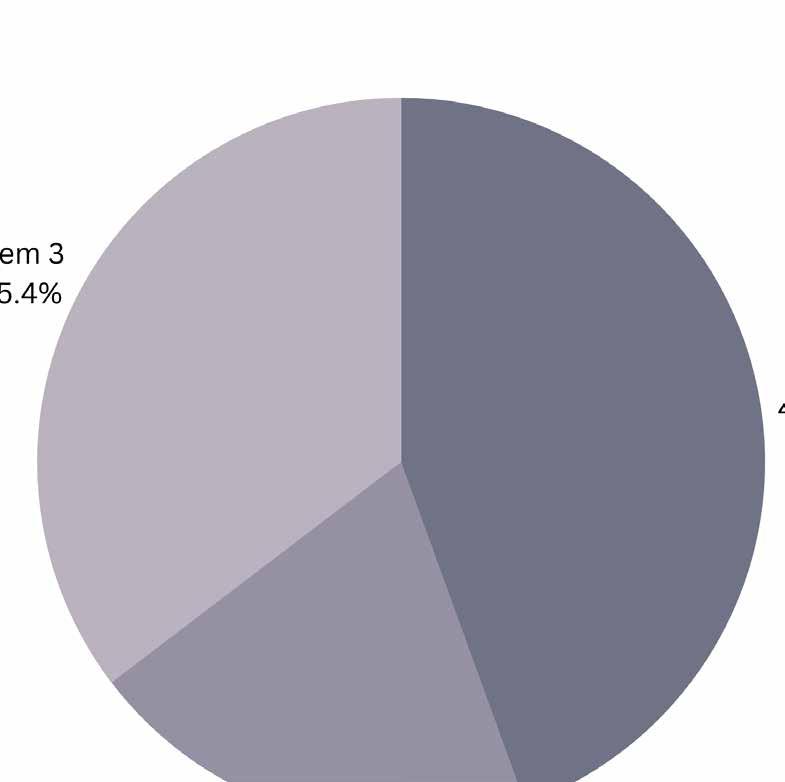
VOTE! D214 SCHOOL BOARD
ELLA MITCHELL, JUSTIN PEABODY Editor-in-Chief & Features ReporterIn the upcoming District 214 school board election on April 4, there are fve candidates: School Board President Bill Dussling, Vice President Alva Kreutzer, Frank Fiarito, Elizabeth Bauer and Misa Edwardsen. Dussling, Kreutzer and newcomer Fiarito are running together as a slate, “Friends of D214.” There are three open positions on the board that the Friends, along with candidates Bauer and Edwardsen, are vying for.
stands for or everything that Bill stands for, and there’s things that I’m passionate about that they might not agree with. We are aligned as a slate, but we don’t have to agree with everything.”
ELECTION DAY
Combined, the trio has 59 years of school board experience. With this tenure, they feel that they are best equipped to handle difcult questions such as the hiring of a new superintendent, the logistics behind the Bears’ purchasing of Arlington Park, the adding of personnel to support students’ mental health and the handling of changing district demographics.
APRIL 4
Both Dussling and Kreutzer are incumbents and hope to continue serving the community with a “student-frst” mentality. Fiarito, who has worked with both Dussling and Kreutzer before on various boards, including the Northwest Suburban Special Education Organization (NSSEO), hopes to add a parental perspective to the board.
“We’re friends, and I think we have similar ideals,” Fiarito said. “That’s not to say that I agree with everything that Alva
ELIZABETH BAUER
The “Friends of D214” are running up against Rolling Meadows parent Elizabeth Bauer. Using her background as an actuary makes her sure of one thing: numbers do not lie. She believes her data analysis skills will be useful on the school board, especially for assessing the efectiveness of new academic or curriculum programs. As an aspiring board member, she is passionate about fostering unity among the board and promoting transparency.
The fnal candidate is Edwardsen. The Prospector reached out for an interview, but received no response.
Confirm Registration:
VOTE ONLINE





LAST DAY TO REGISTER TO VOTE ONLINE IS MARCH 19

VOTE BY MAIL
LAST DAY TO REGISTER TO VOTE BY MAIL IS MARCH 30
VOTE SAME-DAY
SAME-DAY VOTING REGISTRATION REQUIRES TWO FORMS OF ID
GOALS
“STUDENT-FIRST” MENTALITY, CONTINUE RENEWAL PLAN
INTER ESTS
GOALS
RESPONSIVENESS AND UNITY
INTER ESTS
COOKING, SEWING, READING ABOUT HISTORY
EXPERIENCE
CUB SCOUT CHAIR, TREASURER, RMHS MUSIC BOOSTERS
BILL DUSSLING
FINE ARTS, VOLUNTEERING AT FRONTIER DAYS
EXPERIENCE
CO-FOUNDED RE-EDUCATION FIRM, 25 YEARS ON D214 BOARD

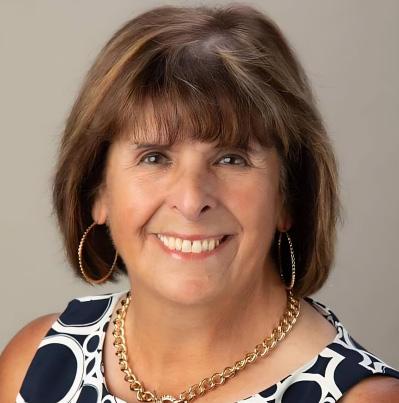
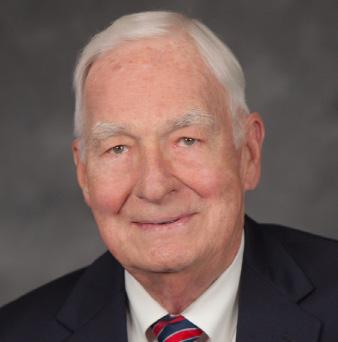
GOALS
SHIFT WITH DEMOGRAPHICS, PROMOTE HONORS COURSES
INTER ESTS
BRITISH HISTORY, FAITH
EXPERIENCE
WORKED ON D59 BOARD, MEMBER OF D214 BOARD SINCE 1999
ALVA KREUTZER
FRANK FIARITO
GOALS
FURTHER TRADES EDUCATION, ADD A PARENT’S PERSPECTIVE
INTER ESTS WORKING WITH KIDS, PRETZELS
EXPERIENCE
SERVED ON D26 SCHOOL BOARD FOR 12 YEARS, VOLUNTEERS IN PRAIRIE TRAILS KINDERGARTEN CLASSES

LETTERS TO THE EDITOR
Drop o letters to the Prospector in the box in the library, in room 162 or email letters to prospectornow@gmail. com. All letters must be signed. Limit letters to 400 words. The Prospector reserves the right to edit for style and length.

staff
EDITORS-IN-CHIEF
Kevin Lynch, Ella Mitchell
MANAGING EDITOR
Kaylie Pasternak
COPY EDITORS
Amanda Feinberg, PJ O’Grady, Zach Moreth
ONLINE EDITOR-IN-CHIEF

Emma Letzig
KNIGHT TV EXEC PRODUCER
Juliet Aquino
KNIGHT TV ASSOCIATE PRODUCER
Katherine Lytle
KNIGHT TV LIVE EXEC PRODUCER
Luis Hernandez
PROSPECTOR EDITORS
Sienna DeMonte, Mollie Kearns, Brooke Michalczyk, Claire Wynkoop
KNIGHT TV DIRECTORS
Tito Gavin, Matthew Niemczyk
Legitimizing local elections
Staff Editorial
Sitting in her Criminal and Civil Law class, Julia Neugebauer, along with all senior students who had recently turned 18, was gifted a packet of information that provided a new opportunity: voting.
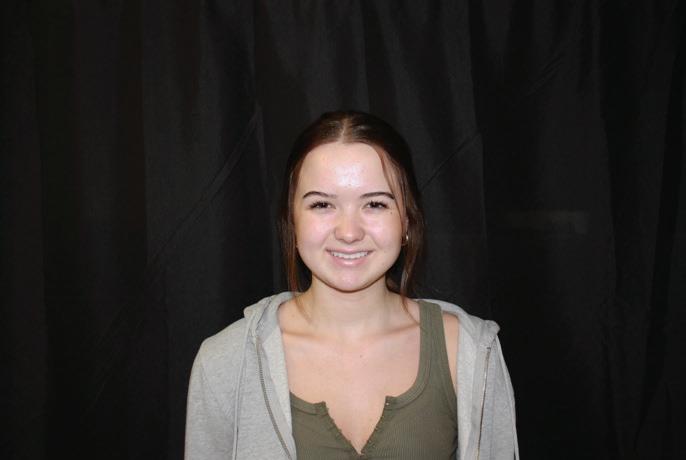
The League of Women’s Voters (LWV) was behind these packages; following seniors’ 18th birthdays, the nonpartisan organization sends information and materials that a freshly minted voter might need: a pencil for flling out ballots and pamphlets to bolster election awareness. Through this action — along with defending democracy and increasing voter confdence — the LWV aims to increase voter turnout and highlight the importance of local and national elections.
In turn, as Neugebauer held her packet, she became more empowered to vote as a young adult, having turned 18 in November 2022.
“I think that having the ability to vote as a citizen of a country, since a lot of people don’t have that ability, and also as a woman, I would want to take full advantage of that,” Neugebauer said. “I plan to vote in every election I’m able to as long as I’m alive because I want to use that privilege.”
Voters like Neugebauer can exercise this right in the District 214 (D214) school board election on April 4. Incumbents Bill Dussling and Alva Kreutzer, who have both been on the board for over 20 years, are running for reelection along with Frank Fiarito as part of a slate entitled, “Friends of D214.” Elizabeth Bauer and Misa Edwardsen are also both running for a seat on the board. Early voting is open from March 20 to April 3, and election day is April 4, on which voters can vote either in person or by mail. (See: “Vote! District 214 school board election” for full candidate profles).
According to the Carnegie Corporation of New York, only about 5-10 percent of eligible voters cast their ballot in school board elections. This can be compared to the 66.8% turnout rate in the 2020 presidential election and 50.3% in
SOCIAL MEDIA DIRECTOR
Louie Caldrone, Elijah Clesen, Nick Doherty, Dylan Heber, Henry Kauke, Amelia Maslowski, Peter Nicoll, Justin Peabody
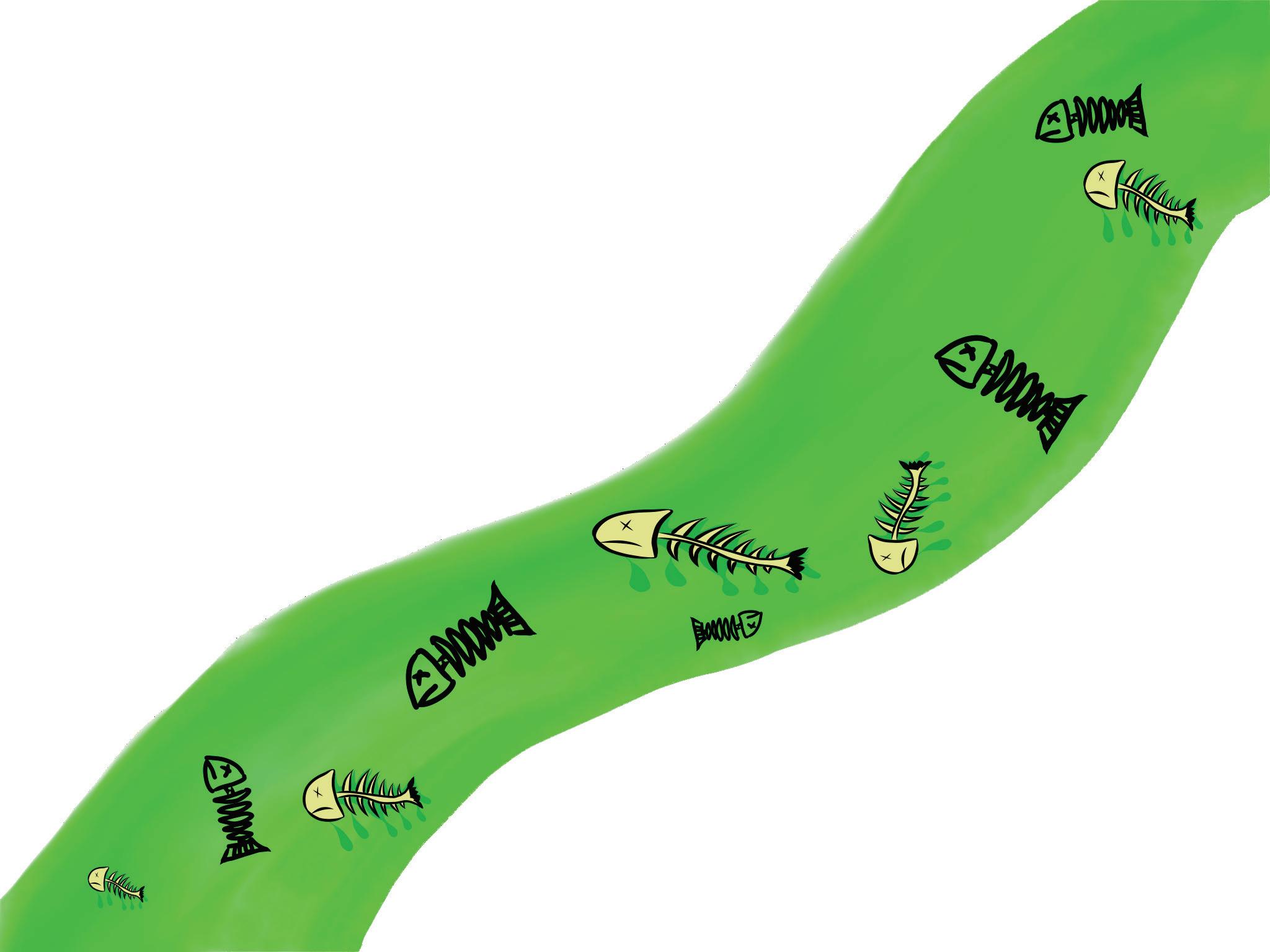
Bella Brouilette, Alyssa Degan
MISSION STATEMENT
The primary purpose of the Prospect High School Prospector is to report news and explain its meaning and signifcance to our readers and the community. We, The Prospector, hope to inform, entertain and provide an unrestricted exchange of ideas and opinions. The Prospector is published by students in Multimedia Communications courses. Some material is courtesy of MCT Campus High School Newspaper Service.
For ad rates, call (847) 718 5376 (ask for Jason Block), email or write the Prospector, 801 West Kensing ton Rd., Mount Prospect, IL, 60056, prospectornow@gmail.com.
the 2018 midterm elections. The disparity between turnout in local and national elections is primarily due to lack of coverage of local elections, compounded by the public’s lack of interest.
LWV member Mary Hahn believes that this lack of interest in local elections is misplaced; in fact, local elections can have the most infuence on community members. In the case of the school board election, Hahn thinks that the school is more directly infuential to students and their families because of proximity.
the students in mind. This particular school board election stands out because the search for the new D214 superintendent is still happening, and as the school board hires the new superintendent, the prospective board members could help lead change within the district.
Taxes are another factor that voters should consider when heading to the polls. School board members have a large say in local tax bills, which impacts the fnancial lives of all residents. The possibility of the Chicago Bears moving to Arlington Heights could heighten these taxes, which would lead local school boards to get involved in the allocation of school funding.
20

For
We, Knight Media, believe that voting in local elections, like the upcoming D214 school board election, is crucial. Due to the power local elected ofcials can have — including overseeing the transition to a new superintendent, adjusting taxes in relation the recent acquisition of Arlington Park by the Chicago Bears, dictating course availability and monitoring the learning gap after returning from the COVID-19 pandemic — it is more important than ever to have your voice heard as a community member.
Beyond simply voting, prospective voters should plan on attending forums, conducting research with nonpartisan resources and striving to understand the impact of the candidate’s stances, which is integral to casting a well-informed vote. Using this knowledge to vote in the election either in person or by mail will ensure that there is open communication between all parties involved and makes sure stakeholders are getting a say.
“School boards afect the hiring of the people that are administering the schools, which has a direct impact on how well their child will be educated. If they are simply a taxpayer … it affects [their] property value,” Hahn said. “If we have lousy schools, [their] property value will go down. If we are not spending our money wisely, we are not going to attract people to come to our schools, and we won’t have a decent place to live.”
The local LWV chapter is making sure voters know about these elections through eight diferent online voter forums. For example, the League partnered with the Arlington Heights Memorial Library to host a forum where voters could ask the D214 school board candidates questions on March 2.
scan here to find your nearest polling place


Education Association Head Building Representative and English teacher Tim McDermott agrees with Hahn’s sentiment.
“These are important elections now,” McDermott said. “These are as important as elections for mayors, governors, Senate and House candidates because it is all grass roots; it starts at the bottom.”
McDermott feels that when going into this election, voters should frst and foremost have
Furthermore, Hahn feels that word of mouth about elections is one of the key ways to express their importance. Especially for young voters, like Neugebauer sharing information through in-person and social media channels can help encourage the next generation to become democratically involved.
“I think I can inspire people by talking about the elections that are happening or using my social media to post about them because that is so infuential these days,” Neugebauer said. “When my parents vote, they always get the stickers that say ‘I Voted’, and I would brand myself with those and walk around all day showing people that I voted.”
Following this election, voters should follow Neugebauer’s lead by sporting their “I Voted” stickers proudly. Taking part in these local elections aid local endeavors and ultimately pave the way to the future of our community and school districts.
Holiday traditions leave lasting impact
cartoonbyBellaBrouilette
Anxiety manifests, manageable


Biting my lips and the fesh of my cheeks in the waiting room of my frst therapy session and looking at the beige walls with paintings of yellow and pink fowers scattered all over while feeling the classic ‘butterfies in your stomach,’ I questioned if therapy was really the answer: “How does therapy even work?” and “Would this random person be able to understand me?”
Something that was supposed to ease my anxiety was actually contributing to it; after doctor’s appointments that ruled out any physical illness to flling out a fve page packet with questions from “How often do you experience anxiety?” to “How are your eating habits?,” all I wanted was answers to why I had been feeling a sinking feeling in my stomach for months when nothing was visibly wrong with me.
Although anxiety can often be invisible to an unsuspecting eye, 5.6 million kids aged 3 to 17 are diagnosed with anxiety, according to Georgetown University Health Policy Institute. The severity of anxiety has also increased following the COVID-19 pandemic: the average anxiety severity score on a national level, which is measured on a scale of 0 to 63, increased 13 percent from August to December of 2020, according to the Center for Disease Control and Prevention (CDC).
had to return to Prospect soon, heightened her anxiety about her academic performance.
“The more focused I am on being perfect, the more anxious I get,” Lange said. “I get really in my head about it.”
Lange is not alone in overanalyzing; the most common causes of teenage anxiety are how they perform in school and sports and how their bodies are perceived by others, according to the Child Mind Institute.
Last year, counselor Rachel Brill frequently worked with one student in particular who dealt with anxiety. Often shy and reserved, the student had a tendency to catastrophize the worst possible outcome.
AMANDA FEINBERG Copy EditorAs anxiety rose with COVID-19 cases, participating in school online and at home coupled with the shut down of public events severely took a toll on most people’s mental health, including my own.
Since having the camera on Zoom wasn’t a requirement in most classes during online school in eighth grade, I would often spend the entire day under my white comforter in bed with my phone in my right hand. I didn’t understand how schools could expect us to be fully im mersed in classwork when the standards of education were set so low.
This, combined with the out right neglect of any physical activity, which was sig nifcantly diferent from my typical 20 miles of running per week, constant ly made me feel sluggish and unpro ductive. Toss in the fact that all of my work in those online middle school years was worth one lousy point for completion (read: no one did it), and that got you lazy, unprepared students who weren’t really ready for the shell-shock of high school.
In the dim lighting, with calming meditation music singing in hushed lulls in the background of her ofce, Brill walked the student through the worst possible outcome using a series of questions to help understand the root causes: “What’s going through your head?,” “Why are you feeling this way?” and “How can we help combat this?”
Through working together to analyze the possibilities, both Brill and the student came to the conclusion that, maybe just maybe, the original worst-case assertion was illogical. Brill’s strategy is not solely found within the confnes of her ofce; similar techniques of rationalizing thoughts are used by my own therapist in our hour-long sessions.
Soon, Brill’s ofce became a place to relax and reset before or during the school day in the case of this student and many others; multiple students would visit her per day, according to Brill.

an ncaa study found 30% of surveyed college athletes reported feeling extremely overwhelmed according to trine university.
In a few instances, Brill has dealt with new students who come in unexpectedly without an “Everything works together,” Brill said. “I don’t think anything works in isolation. I think if you have something going on at home and you’re not sleeping well or [not] getting your homework done, coming into school
herself in the starting blocks, steadied herself on her fngertips and anticipated the “take your marks” signal. Although she felt anxiety from her 6 a.m. wakeup call, to sitting on the 45 minute bus ride, to replaying how to merge lanes over and over in her mind and to the fnal few moments leading up to the relay, which typically lasts less than a minute, Lange used the adrenaline from the fring of the gun to accelerate forward.
“I took the anxiety and I felt it throughout my body … the overthinking actually played in my favor,” Lange said.
Relays are some of the most stressful events because you rely on three other people to perform at their best, including yourself. Since the clock on the track is continuous, only the leading or frst leg can truly see their time. Everyone else is running based of of feeling without knowing if they’re on pace or not. Include having to pass of an 11.5-inch metal baton (which you’re disqualifed if you drop) and you’ve added an entire new layer of anxiety. The results of your relay are not only up to you, and, as we’re constantly reminded, you’re only as fast as your slowest leg.
Although anxiety can greatly afect track runners in their co-dependent relays, there’s also numerous benefts from being in a sport, ranging from social benefts to actual mental health improvement.
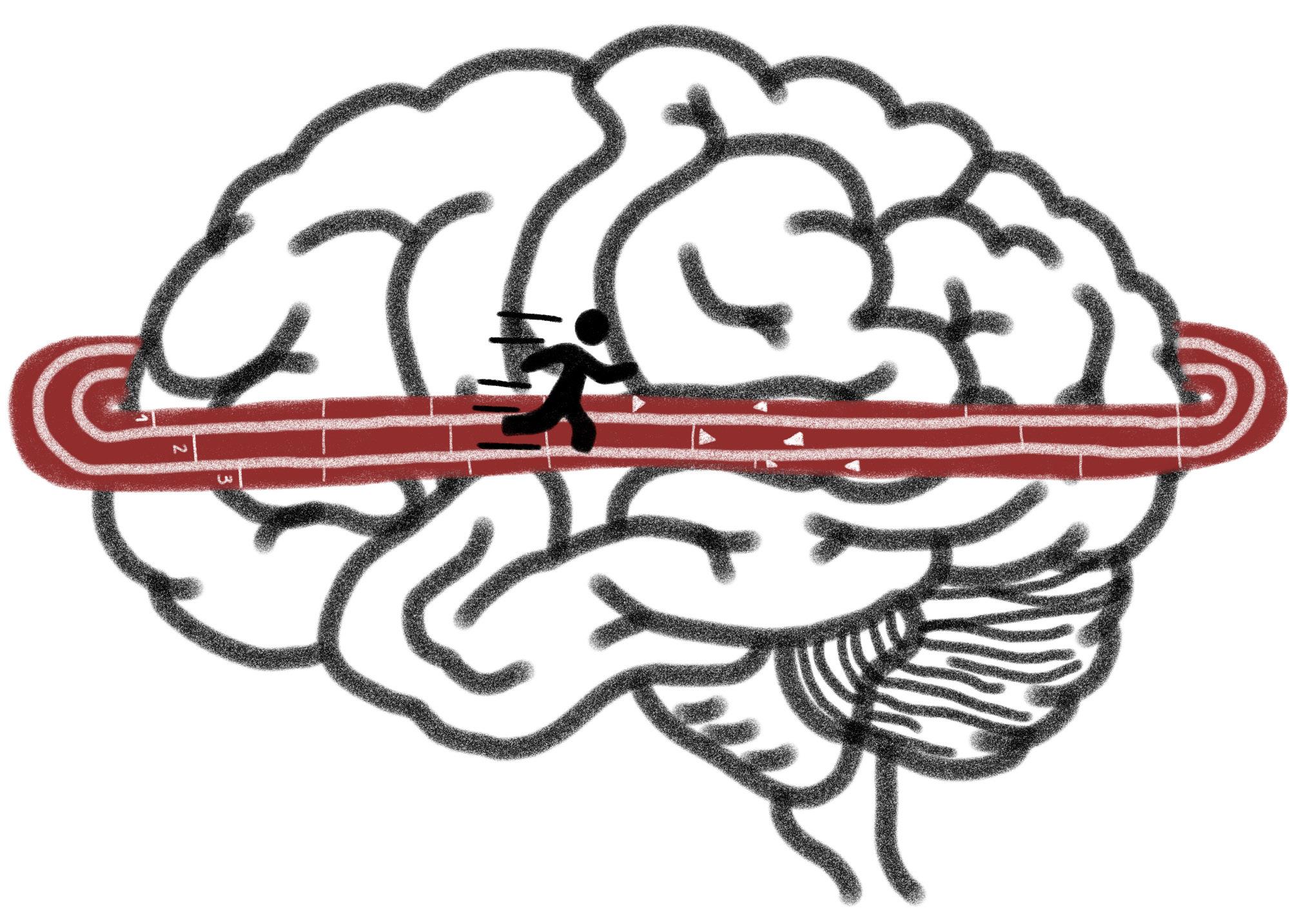
“Track gave me an outlet to make friends, and it allowed me to put my feelings there instead of keeping them in,” Lange said.
Healthy friendships play a principal role in the wellbeing of others, as they can act as a shoulder to cry on. Friends can also increase a persons’ sense of belonging, improve their self confdence and help reduce stress and anxiety according to the National Council for Mental Wellbeing.
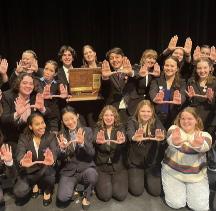
While spending time around friends, I’m able to distract myself from any situations I may be fxated on. Sometimes all it takes is the simple redirection of my attention for me to recognize that my problems aren’t as big as my anxiety can make them seem.
Something more simple that I often look to are quick words of confdence, or afrmations. Through the “I am” app on my phone, I receive several notifcations throughout my day: “I make my day wonderful by focusing on the positives” and “I refuse to let bad moments ruin my positive life.”





By seeing these words and saying them to myself in my head, I’m able to manifest the life I want for myself: one that is flled with happiness and abundance and a world that is not weighed down with the daunting diagnoses of anxiety.
All of these factors accumulated into me breaking down. At a Starbucks drive-thru. In the middle of the day. And, yes, I was holding my iced cofee in one hand and my birthday cake pop in the other.
My dad, sitting in the driver’s seat beside me, recognized that I was struggling with school-related anxiety. Knowing this, he immediately became my support system at that moment; he assured me that what I was feeling was OK, and I could take time away from school if needed.
My story, however, is not unique to me in my eighth grade year. Junior Sophia Lange is one of many teens who felt a personal increase in her anxiety during the pandemic, especially during her freshman year on Zoom while anticipating the unavoidable return to in-person school, one in which she didn’t know anyone in her grade.

After coming from Saint James’ middle school, Lange felt isolated at the start of high school as none of her middle school friends were attending Prospect. She remembers sitting on Zoom and concentrating on hours of homework without having close friends to talk to. This, combined with the fact that Lange inevitably
Brill puts an emphasis on all students having a support system for stressful situations, whether that be from their parents, friends, a coach or the school counselors. Additionally, Brill believes that Prospect is putting more of a focus on mental health support with mandatory Signs of Suicide presentation for freshmen and the recently approved Renewal Plan to hire an extra school psychologist and social worker for the upcoming school year.
“Students have to get support somewhere because everybody needs it,” Brill said. “… In order for someone to be a good student, you need to have your mental health also in the right place.”
However, anxiety can also go beyond the classroom; approximately 30 percent of women and 25 of men who are student-athletes report having anxiety, according to the American College of Sports Medicine; Lange is one of many athletes who experiences anxiety on the track.
“I’ll just think, ‘Oh what if I don’t do well enough? What if the girl next to me is going to pass me?’” Lange said. “It’s a lot of overthinking of what it could be and what it isn’t.”
Feeling immense pressure as the last leg in the 4x100 at the Mid-Suburban League (MSL) East outdoor track conference, Lange positioned
In moments when I feel completely overwhelmed, such as doing chemistry homework at 10 p.m. or studying for a math test on the unit circle, going for an easy 30-minute run helps me refocus my mind and set my priorities. I throw on a tank top and shorts, lace up my HOKA running shoes and hit my usual route through my neighborhood, passing my friend’s houses until I’m sweaty enough to feel accomplished.
I’m sure many people wouldn’t consider a 30-minute run easy, and they’d even laugh at the idea of running as a way to calm someone down; however, the science to prove this theory doesn’t lie.
After a run, endocannabinoids are released in the bloodstream of the body which triggers feelings of reduced stress and calmness, according to WebMD. Not only can running scientifcally improve a person’s mood, but participating in a sport with friends can facilitate a fruitful social life.

As one in fve adults in the United States experience mental illness, mental health awareness has been gaining more attention in recent years, according to Howard University, and more treatment options have come along with it.
Afrmations in conjunction with talk therapy with a counselor has helped me to vocalize issues and reframe my mindset into a more positive outlook, especially in regards to schoolwork and sports.
Sometimes afrmations and therapy are all it takes, and sometimes more serious treatment options are needed such as medication. Either way, it’s important to remember that anxiety, as well as every mental health condition, afects everyone diferently, and the severity of the condition varies from person to person.
Some days are defnitely harder than others, and sometimes I can go weeks without feeling a pit in my stomach; however, regardless of how severe anxiety can be, everyone should be aware of coping strategies to implement in their everyday lives so that they too never have to feel a sinking feeling while standing on solid ground.
on prospec tornow.c om and knightvoices...
TEEN ECO NOMICS
Work 'leaves' teens with experiences, spending skills for future
KEVIN LYNCH Editor-in-ChiefSenior Justin Bolles was sitting at a table at Kura Revolving Sushi Bar in Scha umburg with several of his friends last summer when the server returned to the table and informed Bolles that his card had been de clined. Assuming that it must have been a mis take, he politely asked the server to try the card one more time.
When the server came back with no better news, Bolles came to a realization: he did not have enough money.
Upon checking his bank account informa tion — which he rarely did at that time — and fnding that he was only a few dollars short of his tab, Bolles was forced to look through his wallet and belongings for any other forms of cash, ultimately getting bailed out by one of his friends, who he later paid back.
Even though he worked about 50 hours per each two-week pay period at his job at the local Potbelly Sandwich Shop, making anywhere from $400-800 each period, Bolles says his frequent trips to the mall over the summertime left him without enough to aford even his typical sushi order that day.
“It was a little embarrassing; it just looks like I wasn’t prepared,” Bolles said. “I wouldn’t say ‘broke,’ but it looks like you just don’t make enough money to buy simple things.”
According to the Fall 2022 Piper Sandler Taking Stock With Teens Survey, the average teenager ages 16-19 reported spending $2,331 per year (a 3% increase from the previous year), with the largest categories of spending being food and clothing.
While COVID-19 cut these numbers down signifcantly, they have rebounded since: spend ing, particularly among teens, is once again on the rise.
For Bolles, who only began working towards the end of his junior year, spending has long been a source of concern; before he started working he would typically only have around $50 to spend each week, something that could slip through his fngers easily given that he spends time out with friends almost every day.
After the experience of having his card declined, however, Bolles has made a more conscious efort to cut back on the more costly aspects of his lifestyle.
Bolles says he typically spent about $500-600 per month before reconsidering how his spending habits afected his budget.
Now, he has lowered that number down to roughly $200 and has tried to reduce his spending in other areas by avoiding costly activities on weekdays.
Consequently, he has also been able to put away $50-100 to pay for college per biweekly paycheck, saving practices which he says he plans on increasing over the summer.
Senior Maggie McGarry has similar goals when it comes to saving, often striving to put at least 50 percent of her paycheck into her savings account after each pay period.
McGarry, who typically works on weekends at the local Honey Biscuit restaurant, says that she has also had to be mindful of her spending — especially on expenses like Starbucks and online shopping that rack up quickly — and often tries to apply this same mentality when it comes to outings with friends.
“At the end of the day it just comes down
19.4% $
$


decision and say, ‘I’m glad I picked up the fve extra shifts to get this, then [that is valuable],” Johnson said. “ … I don’t think seeking external validation is the key to success, but I also think it’s important to realize that if you saved up $300-400 for a Supreme backpack, you could save about $300-400 for something else.”
Bolles agrees with this mentality: while having to keep tabs on his account and spending may be a potential source of stress, he is grateful that he can learn how to cope with many of these difcult fnancial decisions now rather than when later.
While it may be a potential source of stress, Bolles believes that experience with money as a young person — whether it be through a parttime job or more unconventional means — will be worth it in the long run.
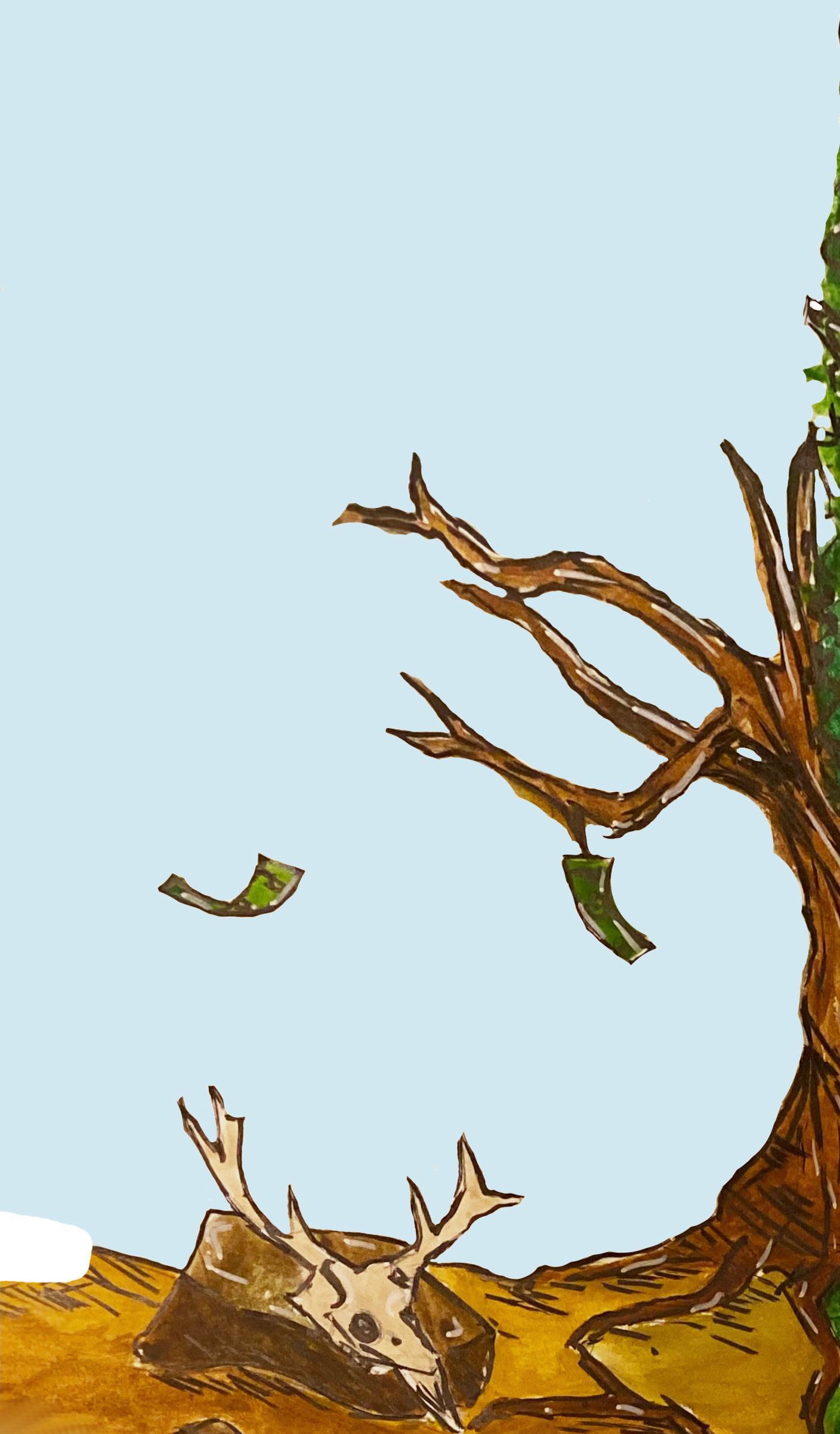
“It defnitely is a mental toll having to [track my money], but the way I see it is that it’s just preparing me for adulthood,” Bolles said. “ … All moments in life are going to be stressful in one way or another, and I feel like it’s easier to work on that than to try to push it of and pretend that it’s not there until it really is.”
it be within his own circle of friends or through his job.
“I feel like there is defnitely a stigma towards being out in public and being able to spend money,” Bolles said. “Especially from behind the counter at a Potbelly … I’ve seen a lot of friends that have come in and then some of them … end up not having enough [to pay] … It’s embarrassing because it’s like, ‘Well, maybe I shouldn’t have had this money; maybe I shouldn’t have used it on anything else’ … If you don’t have money in the world, a lot of people look down on you.”
Bolles attributes his current drive for saving to some of this social pressure; he hopes to live in the city when he is older, and he is afraid of being victim to the embarrassment of not having enough money, especially in an urban environment where everyday expenses cost more.
While he believes that these issues do have solutions — namely, spending time with people and friends who are not afraid to have awkward conversations about money — they can still have fallout, especially when it comes to impacting how much time teenagers spend working in order to afford outings with friends.
McGarry has had frsthand experience with falling into the trap of working too
Avg. Teen Spending Per Week*
$44.82 $44.80
AVG. TEEN INCOME Per Week
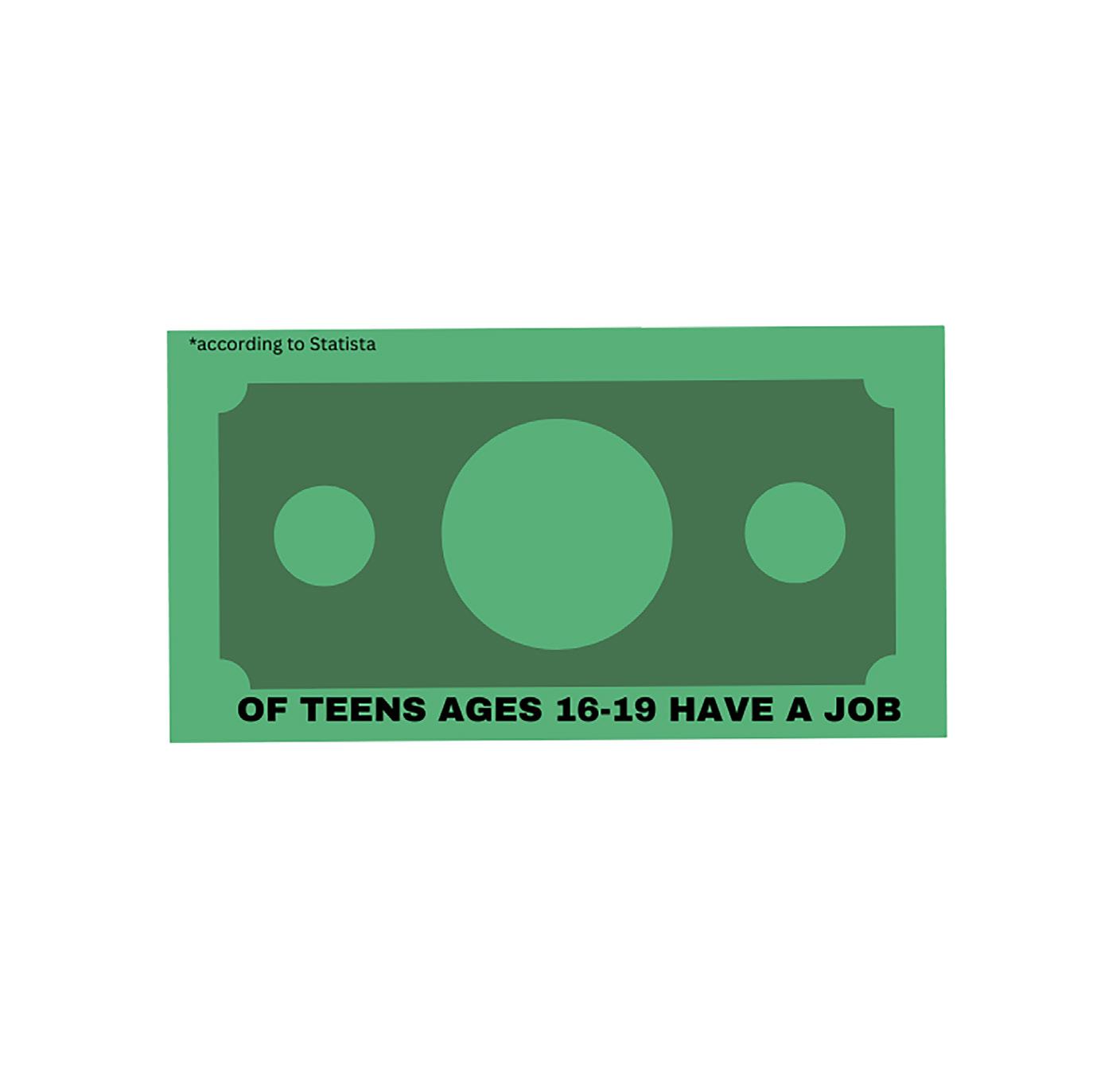
IF YOU DON’T HAVE MONEY IN THE WORLD, PEOPLE LOOK DOWN ON YOU,”
- Justin Bolles, senior
BRANCHING OUT

Sophomore's business provides more 'bean for buck'


everyone wants.”
that on in some way.”
Starting a business can be a daunting task. For many, the better fnancial option is to get a minimum-wage job and punch the hours. For some brave souls, like sophomore Ben Wilkin, going out on a limb and starting their own business is the only option. However, while many might start a business related to something they enjoy or fnd fun, Wilkin did the opposite as he took his shot as an entrepreneur.
Wilkin has a big secret: he doesn’t like cofee. He’s actually never even had cofee, and yet, he’s made it his business, fttingly called Beans By Ben.
“Cofee is a good product because everyone uses it,” Wilkin said. “You need to buy more; it’s not like you buy this once. It’s a renewable thing


In the almost eight years since he started his business, Wilkin hasn’t become a fan of cofee. In fact, he’s the only member of his family who doesn’t like the taste. His idea to sell cofee actually came from his dad, Brendan Wilkin, who wanted a way to get cheaper cofee.
Brendan, Ben’s aunt and his grandma all drink the same coffee brand. They each drink about three pounds’ worth every month. Brendan had the idea to call the company and ask what it would take to be a wholesaler — someone who buys products in bulk for cheaper costs and then sells that to make a proft — and the answer was the (almost) perfect number: 10 pounds.
“I said, ‘Ben, you have to go sell just one pound, and we’ll take care of the other nine,’” Brendan said. “We would save money and he would make money, and he could begin to learn how to manage money.”

This was not the only reason Ben was encouraged to start his own business. Brendan believes in teaching the “value of the dollar” and thought that selling cofee was a great way for Ben to learn this. This ideology comes from the Wilkins’ family history; Brendan, his father, his grandfather and maybe even higher on the family tree were all small business owners, and Brendan wanted to take this opportunity to teach Ben how to sustain a small business for himself.
“My dad encouraged and supported that entrepreneurial spirit … and taught me many of the things I know,” Brendan said. “I wanted to pass
While his father may have encouraged it, Ben took the initiative to expand his business. When he frst began in 2015, he only sold to a few single-purchase customers.
Ben didn’t give up hope; now has about 15 monthly customers. Since growing his business, Ben has made enough money to begin donating to organizations such as American Legion, Feeding America and, most recently, the Women’s Sports Foundation.


Ben’s plan is double or triple what he is making right now.
The only reason he feels comfortable making goals and plans for the future is because of how much he loves it; he fnds that owning his own business is much more enjoyable and proftable than a minimum-wage job.
“I like being able to choose what I want to do and when I want to do it,” Ben said. “Everything I have, I made, but also everything that goes wrong is my fault.”
While there are many pros and cons to selling cofee, Ben is proud of how far he has come on his own. One of the most important lessons Ben has gleaned from being an entrepreneur is the value of money: it means more to him because he made it himself.
Ben isn’t the only one who is proud; Brendan continues to be impressed by his son and his ability to stick with his business after seven years of following in the footsteps of his family.
“I don’t know if I ever imagined he would take the initiative to go knocking on doors and make himself vulnerable like that, but I defnitely am [proud],” Brendan said. “I think he showed a lot of initiative and learned some valuable lessons.”
‘HAND’-LING HENNA: Senior Maliha Waheed draws henna for a client.

Henna designs are part of Waheed’s traditional Pakistani culture.
(photo by Emma Letzig)
Henna artist spreads culture
When senior Maliha Waheed was seven years old, her mom placed a henna cone into her hands. She provided her little instruction and allowed Waheed to explore her creativity. However, this wasn’t Waheed’s frst encounter with henna; she attended several South Asian weddings as a child, where she was fascinated by the intricate designs and the beauty of the artwork.
“I started practicing on my friends and all of the other little girls,” Waheed said. “[I] was so happy to see them being happy.”
Henna is a dye from the plant Lawsonia inermis, and it is mainly used in Asian cultures for celebrations and special occasions. Waheed gets her henna directly from Pakistan; her family who lives there brings them back whenever they come to visit.
Waheed saw potential for a henna business, and, as a 10-yearold, decided to pursue the idea. Using networking, she connects with potential clients who want henna art done and discusses prices, designs and
scheduling with each individual client. Her clientele consists mostly of brides, so Waheed says business is often booming during the summer wedding season. She also uses Instagram to showcase her designs and draw in new clients. Simpler designs only take about fve to 10 minutes and are typically drawn on the hand and fngers. The longest bridal henna design, however, takes about an hour and 40 minutes and consists of detailed designs that extend all the way up both arms, including the bride’s fngers, hands and forearms.
“Doing my frst ever bridal henna [was my favorite memory] because it’s obviously such a big accomplishment,” Waheed said.
As far as pricing, the standard rule she implements is the more time a design takes her, the more expensive it is. Smaller designs can range anywhere from fve to 10 dollars, whereas larger bridal designs can cost upwards of $200 to $300.
Waheed plans to continue her business and continue gaining experience and clients.
“My overall goal is to make the client happy,” Waheed said. “If I’ve made them happy, then I feel like I’ve accomplished my goal; that’s what brings [me] pride.”

Student teacher learning the ropes
Jessica Stavros pursues her calling for teaching while being in the circus
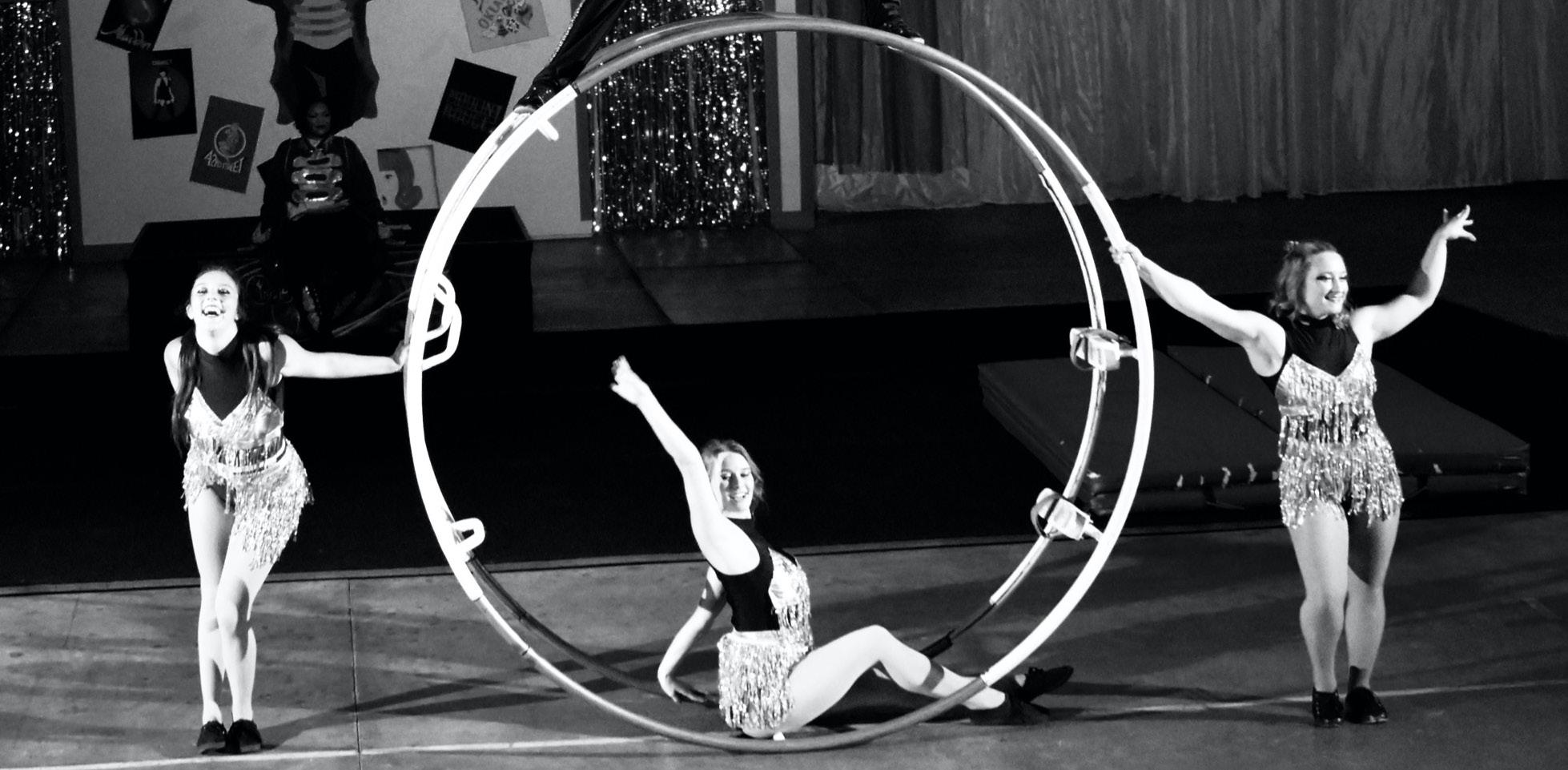 MOLLIE KEARNS Executive News Editor
MOLLIE KEARNS Executive News Editor
Looking out over the entire gymnasium where the Gamma Phi Circus at Illinois State University (ISU) practices, Jessica Stavros could feel her jitters come alive as the only thing separating her from the ground was a thin tightrope. Ironically, Stavros has a crippling fear of heights, and forced herself to dig deep for the tiniest ounce of bravery to keep walking. Yet, each careful step she took across the rope felt more and more freeing.
“Tightrope will forever and always be my frst love,” Stavros said. “When you are walking on a wire, it is the closest thing to fying. You take one step out, you just feel your world expand.”
Stavros is a three-year member of the circus at ISU, where she is also pursuing her teaching degree. Stavros is a student teacher at Prospect, teaching under Jason Block and Karen Kruse in their Written and Oral Communication/World Language and Composition classes. On top of being a performer, Stavros coaches the circus at ISU.
As a gymnast at Wheeling High School, Stavros loved the exhilarating feeling of fipping in the air. Her gymnastics career ended when she broke part of her spine in high school, and she was directed towards ISU’s circus troupe her freshman year.
Stavros has managed to take her Gamma Phi circus experience around the country through diferent contracts to perform at resorts. Though she has been able to visit lots of cool places, a trip to Georgia — in all of its sticky, humid glory — stuck out to Stavros the most.
In a tent set up by the resort the troupe would be performing at, Stavros recalls being pulled up by a set of ropes to the very top of the tent. While she was in the middle of rehearsal, a rainstorm was going on outside and through a little hole in the tent, Stavros could feel the rain trickling down as she was up in the air performing.
“I will never forget it; it was like I was in a movie,” Stavros said.
As a self-proclaimed introvert, Stavros struggled with opening up to her teammates at frst. She had to jump outside of her comfort zone given that circus is such a team-based art and not communicating efectively during training could result in a disastrous slip-up in a performance.
“When you are holding up another person 30 feet in the air,
that’s a relationship [where] you … know that your lives are in each other’s hands,” Stavros said. “You don’t have the space to be quiet or to be shy, you are there and you are helping each other.”
Maritza Atayade, the creative director at Gamma Phi circus, can attest to the rigorous nature of circus that Stavros has experienced.
Atayade frst came to see her eldest son perform at Gamma Phi in 2010, and by the time he was about to graduate, she was already hired and integrated into the ISU program. Atayade loves to see the college performers’ enthusiasm and dedication to the art.
“I was watching all of these kids doing their homework and then running to do their act and then running back to do more homework,” Atayade said. “I love these kids because they don’t get paid for anything and they are putting everything into it while taking care of each other.”
Although she enjoys performing for her circus, Stavros is most passionate about teaching. Having a family full of teachers was part of the reason she decided to pursue education.
“I’ve always wanted to be a teacher; I’ve never had a time in my
life where I strayed from that dream,” Stavros said.
As a graduate from Wheeling, Stavros knew that as soon as she could gain experience in the classroom, she wanted to be back in District 214. Teaching-wise, she thinks that English is the subject she feels most at home in.
Surprisingly, Stavros actually hated English growing up. Her mindset changed during her junior year of high school in her AP English Language class taught by Michael Burke. In Burke’s class, Stavros got to have conversations about the world around them and furthered this interest via the books she read in class.
Stavros strives to be the person for students that Burke was for her, and hopes that students can come into her class and feel like it is a safe space to share ideas while exploring new perspectives on the world around them.
“In English, you get to explore topics that change lives … English is the place where people walk in one person and walk out with a completely diferent view on the world … It’s the high school age where you can have richer conversations with students,”
said.
Importance of consistent night-time schedule ‘slept on’
SIENNA DEMONTE Executive Features EditorTo sophomore Erin Coleman, sleep deprivation makes her feel sluggish, like the energy has been sucked out of her body and her brain feels drained of its ability to function. She senses her eyes drop to her cheekbones and her body starts to become frail as the rosiness of her cheeks disappears and her hands start to shake.
Sleep deprevation becomes an endless cycle that is only exasperated by her routine of procrastination. Though she knows sleep is important, it is not something Coleman prioritizes in her life. She puts her family and friends frst, and when juggling certain assignments that are necessary, she sacrifces her sleep to complete them.
“As a child, I didn’t have many crucial events that overruled my sleep schedule,” Coleman said. “I always went to sleep at a normal time because there was nothing more pressing than sleep; the reality is much diferent now.”
According to SleepFoundation.org, sleep deprivation occurs when people get less than seven hours of sleep. Negative efects include loss of concentration, loss of focus and decreased long and short-term health.
According to National Geographic documentary “Sleepless in America,” the amount of sleep needed varies from person to person and is determined by age, activity, genetics and environment. Therefore, there is a wide range for the amount of sleep needed for adolescence, but the target goal is between eight to ten hours.
UNDEAD: The effects of sleep deprevation are not only mental. Other more obvious physical signs include dark under-eye circles, drowsiness and persistant grogginess.
to choose.”
40%
While these hours sound reasonable enough, there are many reasons that teenagers struggle to meet the recommended threshold of shut-eye. In fact, in a recent survey, 40 percent of Prospect students responded get six hours or less sleep a night.
of students say that they get six hours of sleep or less every night, according to a knightmedia survey of 224 students
The biggest disrupter of teen sleep schedules is screen time, according to professor of psychiatry Daniel Buysse from the “Sleepless In America” documentary. All human beings are alerted to certain sleep times — corresponding with light outside — due to the 24-hour biological clock in the brain called the circadian rhythm. When light is introduced, however, it messes up the whole system. According to Coleman, it is hard to force her body to go to bed after being on an iPad at school, a phone screen all day or watching TV at night. When trying to wake herself up in the morning, Coleman usually refuels with a cup of cofee.
In fact, six hours after cafeine is consumed, half of it is still in a person’s body. It can take up to ten hours to completely clear it from a person’s bloodstream. Cafeine, too, afects a person’s circadian rhythm and causes their mind to be awake and active for longer, according to SleepEducation.org.
“Cafeine is related to that vicious cycle as well,” Schafeld said. “After being sleep deprived on Monday morning, you got the Monday morning blues, so you jack up on cafeine to wake yourself up.”
To combat this, Schafeld limits her cafeine intake by the end of the school day.
the body to fuel up on sleep may seem scary to some. According to Joe Bass, Chief of the Division of Endocrinology and Metabolism at Northwestern University’s Feinberg School of Medicine, there is evidence that sleep loss promotes disorders such as Alzheimer’s, cancer growth, sleep apnea, depression, anxiety, substance use, obesity, diabetesand death.
“I think our society does not honor sleep the way it should,” Schafeld said. “You know that expression, ‘I’ll sleep when I am dead?’ That’s scary because chronic sleep deprivation also correlates to dying earlier than you should. I think we need to prioritize [sleep] as we do with our ftness and work; it should just be something that we do because it’s good for us.”
Schafeld also fnds sticking with one specifc bedtime and creating a schedule for herself every day helpful to catching extra Z’s. This is the same for her family as well; she makes sure her son, Logan, puts away his video games and turns of his phone at least 30-45 minutes before bedtime to ensure he doesn’t have a tough time falling asleep at night.
“We can’t just get rid of technology; that’s ridiculous,” Schafeld said. “But [it’s important] to have the realization of what technology can do and to limit yourself accordingly … You have to personalize your sleep schedule and fnd out what works for you; it’s called sleep hygiene. You have to know what your cocktail is; what allows you to get the best sleep?”
When trying to balance sleep schedules, everyone has diferent strategies. Coleman attempts to have a consistent amount of sleep every night. That being said, she fnds herself trying to catch up on sleep during the weekend.
Schafeld says she sees students attempt to catch up on sleep and fall into this common “sleep myth.” Schafeld explains how this “catchup” method starts a vicious cycle of sleep deprivation.
“I can see the sleep deprivation in my students’ eyes,” AP Psychology teacher Daria Schaffeld said. ”What’s hard is that adolescents, in general, are told to get a lot of sleep, but also you’re told to do a bunch of other things; it’s hard
Though cafeine might help people like Coleman, to start their day the efects it has on a person’s body are drastic; the most obvious efect of the stimulant is that it can make it hard for a person to fall asleep directly after consumption.
The combination of trying to “catch up” on sleep, screen time and cafeine can have detrimental efects beyond mood. According to “Sleepless In America,” it is during sleep that your brain processes all the memories made throughout the previous day, thanks to a part of the cycle called Rapid Eye Movement (REM). During this time, brain activity increases, eyes dart around quickly and pulse, blood pressure and breathing speed up, which is a function vital to learning and memory.
The long-term efects of sleep deprivation are very real, and the consequences of not allowing
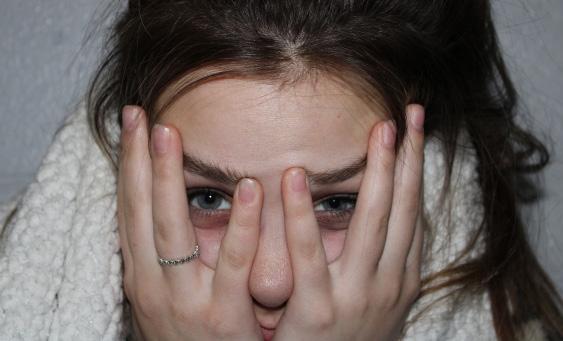
“Once the damage is done, the damage is done,” Schafeld said. “You can’t go back and fx it, so by trying to “catch up” on the weekend, you just end up screwing up your sleep cycle even more.”
Schafeld structures her sleep schedule to follow what she calls a behavior modifcation plan. She sets a goal and takes breaks between activities instead of task-switching and toggling back and forth between things. She fnds that it helps her prevent making mistakes, decreases efciency and distraction and, ultimately, minimizes stress during the day.
VOGUE
MARCH 2017
Let’s take a look at the fresh faces of fashion in March 2017, the iconic group cover. This image features, from left to right, models Liu Wen, Ashley Graham, Imaan Hammam and Adwoa Aboah among the seven celebrating the magazine’s 125th anniversary. “Vogue” usually limits the coveted cover spot to one person but chose to include all of these models as a way to express how the beauty industry is changing to be more inclusive of race and body type. And yes, I agree that when it comes to race, this cover is diverse on account of featuring Asian, Black and biracial models, but I wouldn’t say that including one plus-size model — Graham — fully captures body inclusivity.
I don’t think that any reader who hasn’t seen Graham before would even realize that there is a plus-size model on the cover of this issue because the way that the models are posed does not celebrate their individuality at all; instead, this cover looks like just another group of famous, conventionally attractive people on the cover of a magazine.
And what is going on with the outfts? “Vogue” is generally associated with the idea of innovative fashion and, call me crazy, but I don’t think that a group of people wearing black turtlenecks with diferent colored shorts and belts is the pinnacle of couture.
But art is subjective, so maybe by putting
these models in a lineup where they all wear practically the same outft is a way to say, “Everyone is beautiful, and our diferences don’t matter!” Or, maybe this was just a swing and a miss towards inclusivity and democratization; I think it’s the latter.
SEPT. 2020
“Vogue” has long strayed away from their illustrated covers, but in September of 2020, they released their frst illustrated cover since the late ’50s.
For the frst time ever, all 26 global branches of “Vogue” centralized their September issue around the message of “hope,” and “Vogue U.S.” actually released two versions of this issue.

According to an article by “The Cut,” “Vogue” commissioned artists Kerry James Marshall and Jordan Casteel with almost complete creative freedom.

Casteel painted Black designer Aurora James wearing a gorgeous blue gown while sitting on a rooftop in Brooklyn, NY. Marshall opted to illustrate a fctional woman with very dark skin to spread the message that, “Black is beautiful.”
September sets the tone for the next year and these covers show the publication moving on from its tawdry past.
FEB. 2023
Dec. 1892
DEc. 2020
Oh. My. God. A man in a dress?! When the December 2020 issue dropped featuring singer and actor Harry Styles wearing a dress, everyone lost their minds.
Candace Owens, a conservative author, talk show host and political commentator, infamously re-tweeted photos of Styles from “Vogue’s” cover, including photos of him wearing this Gucci dress and another photo of Styles in a skirt, with the caption, “Bring back manly men.”
Thankfully, many more supporters of Styles and this photoshoot came to “Vogue’s” defense, and this cover sparked up conversations all over the internet about gender roles and toxic masculinity.

Of course, as a fan of Styles, I immediately bought this issue and took it home to show my support for “Vogue” in this couture controversy. One day, I came home to my 79–year-old Filipino grandmother reading the magazine without even batting an eye at the cover. Granted, she didn’t have her glasses on, so maybe she didn’t really see it, but if my elderly, immigrant grandmother doesn’t have a heart attack over someone wearing a piece of clothing, neither should you.
June
Florence Pugh graces “Vogue’s” cover for the second time in this issue, and all of her photos feature food. As a fan of Pugh, I assume this culinary combination is in reference to Pugh’s series of Instagram Live broadcasts that she calls “Cooking with Flo.”

In these segments, Pugh shares her love of food and allows her fans to laugh along at her kitchen mishaps. I love that Pugh’s photos include her personality, but I wish that the concept was a little more artistic.
From images of the actress holding a giant fsh throughout her feature story to her snacking on what appears to be a Hot Cheeto, these photos illustrate Pugh’s culinary love, which is more inspired than the magazine’s previous celebrity covers.
Ever since “Vogue U.S.” defaulted to capturing celebrities on their covers rather than models, I feel that their covers have been diluted to a simple photo of a celebrity in a beautiful garment as opposed to a model donning interesting clothing in a boundary-pushing pose.
These covers are less eye-catching to me because I see photos of celebrities every day and they’ve just become dull at this point. On the other hand, a cover model in some incredible clothing with a pose would stop me in my tracks; I’d rather purchase that magazine than one with another basic, smiling picture of a celebrity. Although Pugh’s cover could be interpreted as another boring, celebrity cover, I believe that the incorporation of fruit as a tie to her personal life makes this cover live up to “Vogue” standards. V
According to Nancy Ludwin, the frst issue of “Vogue” was distributed as a weekly newspaper in New York City that catered to the upper class by featuring stories about fashion, sports and social events in 1982.
In 1909, Condè Montrose Nast converted “Vogue” to a women’s magazine, leading to a rapid expansion through different branches: “Vogue Italia,” “British Vogue” and “French Vogue.”



The company released its frst colorful cover in July of 1932. This issue also highlights how the magazine used to vary its headline fonts before landing on the iconic “Vogue” as we know it today.
Throughout the late ‘30s, “Vogue” strayed away from its illustrated-only covers and opted for photographed images of models.“Vogue” also started to elevate its writing, focusing on fashion, literature and art.

Anna Wintour has been the editor-in-chief of “Vogue” since 1988 and revitalized it by featuring celebrities on the covers as opposed to models in order to appease younger consumers.

THE most interesting and controversial covers of the last decade, As listed by pop culture fiend and ktv executive producer Juliet aquino
Recovery nation procrastination
“Hurt or Injured: Don’t Be Weak, Know the Diference.” That was the frst article that appeared when I googled the diference between being hurt and injured. No wonder the most common injuries in high school sports are caused by overuse — places like the internet are literally telling students to play through pain.
“Instead of just taking a few weeks of, now you have a broken leg,” Prospect Athletic Trainer Shannon Malahy said.
Telling a high school athlete to take a break is the same as telling Tom Brady to retire; they simply can’t stay away from the game. Which is great until that pain they have been feeling for a few weeks turns into a season-ending injury.
“I wish I could go back and tell my younger self to let the stress fracture heallet your body heal,” Splinter said. Getting help and letting your body recover is not the only thing necessary to prevent overuse injuries. Sometimes, admitting to yourself that you are in pain and need help is the hardest part of the journey.
ZOE BROWN Staff Reporter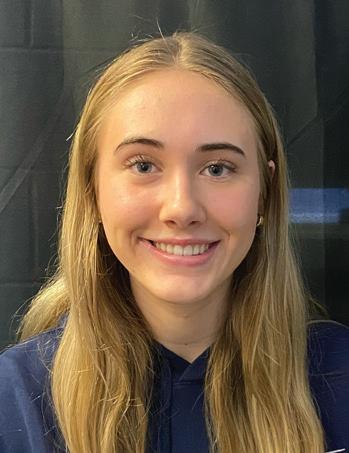
“With my stress fracture, it was some of the most pain I have ever felt in my athletic career, but saying I have a stress fracture made me want to degrade how serious my injury was rather than be honest about how much pain I was in,” Splinter said. Splinter is not the only athlete who is hesitant to take a break and be honest with herself about how she feels.
However, at other schools she has met coaches like that, which is the reason why that is an expectation in athlete’s minds.
According to Malahy, what many high school athletes don’t realize is that not treating overuse injuries as soon as possible can cause even bigger problems down the road. If tendinitis (the most common overuse injury) is not treated when someone is younger, it can easily come back when they are older and make their tendons stifer and more likely to rupture.

“High schoolers are generally not thinking long term. It’s the ‘I want to play now, this is it’ mentality,” Malahy said.

There have been instances Malahy recalls when coaches have shattered their ankles while coaching because they injured them so many times in highschool and never let them fully heal, and now the efects of that will be with them forever.
Unfortunately for junior Skylar Splinter, that situation turned into her reality midway through her sophomore basketball season when she started to experience pain in her right ankle. Even though her coaches would have never held her back, the mental pressures Splinter put on herself made her continue to play on her injury.
“Even if I’m in pain, if I don’t practice today then I am not going to play,” Splinter said.
That was her thought process during the situation, and unfortunately, that is how many high school athletes think when it comes to being hurt. Pressures that athletes put on themselves to perform and to receive scholarships make it difcult for players to sit out to heal their bodies, and that is when you start to see stress fractures, tendinitis, muscle strains and other overuse injuries occur.
“(Players mentally pressuring themselves to perform) is the biggest problem I’ve had here since I started. Telling people to stop, because it’s a go go go mentality, and coach is going to hold me out because I’m not working hard enough, well you are, you just need to back of at this point,” Spliner said.
over 45% of sports injuries rESULT from overuse
“You (high schoolers) don’t think about the future….you’re not thinking ‘Am I going to be able to play intramural sports when I want to? Am I going to be able to pick up my kids later in life?’” Malahy said.

Even though being held back is the number one reason Malahy sees athletes delay getting treatment, she says that this is completely unrealistic at Prospect and that none of the coaches are like that. She has never met a single coach at Prospect who has told an athlete not to go to the trainer.
*according to drdavidgeier.com
Everyone is guilty of pushing themselves past their limits. I myself continued to play on an injury during my basketball season this year. I started to experience shin splints, and I should have taken a week of to let them heal, but instead I decided to show up to practice everyday and put myself through two hours of excruciating pain. I just expected it to get better, but it didn’t;
the pain only got worse, and soon it affected me both mentally and physically while I played.
However, I continued to tell myself that the season wasn’t long enough for me to sit out and miss a few practices. It wasn’t until I interviewed Malahy for this story that I realized I needed a break. And guess what, I took a week
of after the season ended and now my body is healed.
But if someone had told me and the millions of other student athletes that sufered from overuse injuries this year (according to Stanford Medicine) that taking a break is ok, then maybe we wouldn’t be experiencing this issue in the frst place.
Baseball: a sport of strikeouts, sadness
As I stood in the batter’s box, a wave of thoughts fooded my mind: keep your hands back; remember to extend your arms; eye on the ball; just need a ground ball, nice and easy, slow load; stop thinking; just react. Don’t strike out, don’t tell yourself not to strike out.
I stepped into the box and watched the pitcher wind up.
“Strike one!”
That was faster than I thought.
“Strike two!”
PJ O’GRADY Copy EditorDamn, a curveball; I thought he’d throw a fastball. Now he can throw a fastball, slider, changeup or a curveball. Also, don’t strike out.
“Strike three!”
Why’d I get fooled on that changeup!
With my countless thoughts having been for nothing, I took the walk of shame back to the dugout like a kid who just lost his puppy.
The question I dare to ask is: what are the dumbest things you’ve ever heard that were said in full seriousness? I assume that your list has at least one of these phrases on it: “the Earth is fat;” “the moon landing was faked;” “nothing is impossible,” and so on. For me, when someone says that baseball is “easy,” my mind attempts to process if that was just a lapse in proper thinking or a genuine, yet uninformed, belief. While I may not throw a punch at them, I still proceed to silently judge them for their sheer ignorance afterwards.
Baseball is the most mentally disheartening, struggle-flled sport out there. At least, that’s what Yogi Berra, former professional baseball player, was insisting when he said, “Baseball is 90 percent mental. The other half is physical.”

It’s a game built on losses. In fact, if it wasn’t called baseball, I most defnitely would’ve called it Failureball.
One factor in baseball’s difculty is that the sport is unpredictable and constantly changing, according to senior varsity baseball player Jack Friar.

“It’s not [simple],” Friar said. “Every pitch, it’s something new. You never know what’s going to happen; you never know if the pitcher’s going to throw a strike, he might throw fve straight balls … Nothing’s the same every day. No pitch is the same, no hit is the same.”
Baseball’s mechanics are always in need of tweaking. As a player going on my twelfth year of the game, I’ve still been working on my swing every chance I get. From a hitter’s standpoint, your craft is never fnished. You can always work on keeping your hands back a split second longer or straightening your lead leg just a bit more; or, if you’re like me, you can spend your fourth year trying to watch the ball the whole way.
It can drive a player crazy knowing they cannot be perfect all the time. I’ve had games where I took great swings, but my timing was a split second of, meaning the only result was a strikeout or a weak pop-up. I’ve had games where I had perfect timing, but I stepped a couple inches too far forward and ended up hitting a soft ground ball to second base.
Those types of results eat away at a player’s soul; they debilitate the mind until the pain becomes numbing.
Not only is hitting mentally challenging, but even the tiniest parts of the game, like baserunning, are taught in-depth to make sure you maximize your speed and efciency. Details such as how far your lead-of should be — a step and a dive, to be exact — which part of the pitcher you should look at when stealing, how far of the base you should go when a pop up is hit and which foot should touch which base will leave your head spinning to say the least.
Once you’re ready to step into the box as a hitter, the number of diferent strategic approaches needed in a given situation is also something I urge every soul to admire. If the count is 0-2 with a man on second base, your job is usually to hit a ground ball to the right side of the feld. If the
count is 2-0, you have to be ready for a fastball to smash, but don’t be foolish enough to swing at a bad pitch because that will turn the tide of the whole at-bat back to the pitcher. If there’s a man on frst base, you should look to either sacrifce bunt or move the runner over with a well-placed ground ball.
With every count and every situation, there is a diferent approach that is recommended to maximize success; the multitude of diferent options available creates an abundance of instances that make the sport easy to overthink if the player is not sharp and decisive.
According to Charlie Maher, the president of the Professional Baseball Performance Psychology Group, there are psychologists or mental skills coaches on 26 out of the 30 MLB teams; still, that number is inadequate considering there are four teams without psychologists. These psychologists help players deal with expectations, stress and distraction, and they guide players through visualizations of success during their gameplay. These are crucial aspects of baseball since the length of the game — the average time between each pitch is 23.8 seconds and the average time between batters is 54 seconds, according to Society for American Baseball Research — allows for more time for doubt and negative thoughts to creep in.
According to the Replacement Level Podcast, the combined average of hitters in the Hall of Fame is a whopping .303. Hitting over .300 puts you in the best of company; however, it still means you’re failing 70 percent of the time. Hitting is the only line of work in which failing more than half the time isn’t just acceptable: it’s inevitable.
You might catch yourself asking, “Gee whiz, that leaves the question on a literal standpoint: why is hitting the ball actually so hard then?” To answer that question, I’ll need to delve into some basic-level physics … which I hope doesn’t bore you to death. The fact of the matter is that when trying to hit a ball with a 24.6-centimeter surface area that is moving at 95 miles per hour with a bat consisting of a 6.6-centimeter diameter, the odds are fairly high that you’ll miss or fail to hit the ball squarely.
Considering the average reaction time to hit a baseball in the MLB is 400 milliseconds from the time it leaves the pitcher’s hand, the hitter only has about 150 milliseconds to decide if they want to swing. Furthermore, if you mix in the chance that the pitch is a curveball or slider, it completely messes with the batter’s timing, especially since a MLB curveball can move as much as 17.5 inches laterally, according to Science of Baseball. Conversely, when taking the mound, you need to have the utmost focus when pitching. The average MLB starting pitcher is expected to go fve innings, or about 100 pitches, which is relatively similar to how many pitches a high
school starter would go. If a pitcher makes one mistake, like throwing a fastball a fraction of an inch higher than they would have liked, the entire tide of the game could shift after a home run or a double in the gap.
The tempo of the season also makes baseball a grueling endeavor. In a sport that moves at a quick pace, yet simultaneously feels long at the same time — from March until June in the high school season or from March until October if you play high school, summer ball and fall ball back-to-back — it’s impossible to maintain elite levels of performance throughout the entire season. The polar opposite of success in baseball — which is already rare — is slumps. I’d say the probability of a player going through a slump in the span of six-and-a-half months is higher than the chances of a fsherman catching a fsh.
Friar, who says he went through a slump his junior year even after the team had won the sectional championship the previous year, knows the feeling all too well.
“It’s a long season [for] high school and [in the] pros,” Friar said. “It’s a long time, and you can go through so many slumps and you can hit the ball so well [and not] get the outcome you wanted. [You can] do the right thing every time and still end up 0-for-4 on the day.”
Another contributor to pressure and anxiety alike is that, in baseball, all nine players must have an at-bat. That means there’s no hiding. Once you’re up to bat, you’re alone; all eyes are on you. At best, you are relaxed and stoic; at worst, you strike yourself out before the frst pitch. This isolated feeling, combined with poor hitting performance, can make even the most seasoned of hitters crumble before your eyes.
Ask Baltimore Orioles’ frst baseman Chris Davis how he feels about slumps. In 2019, he started of the year with a pitiful 0-for-54 hitting streak, which broke the record for the longest time without a hit for a position player. Davis went 62 plate appearances and 17 full games
without a hit; additionally, it had been 210 days since he got his last hit as well.
When on the defensive end, baseball does not get much easier. The tolerance for error when felding is minuscule due to the demoralizing efects it can have on the team, making the pressure that much higher in tight game situations. Personally, I can’t even count on ten hands for the number of times I’ve made a mistake in the feld purely because I was overthinking the play instead of instinctively reacting.
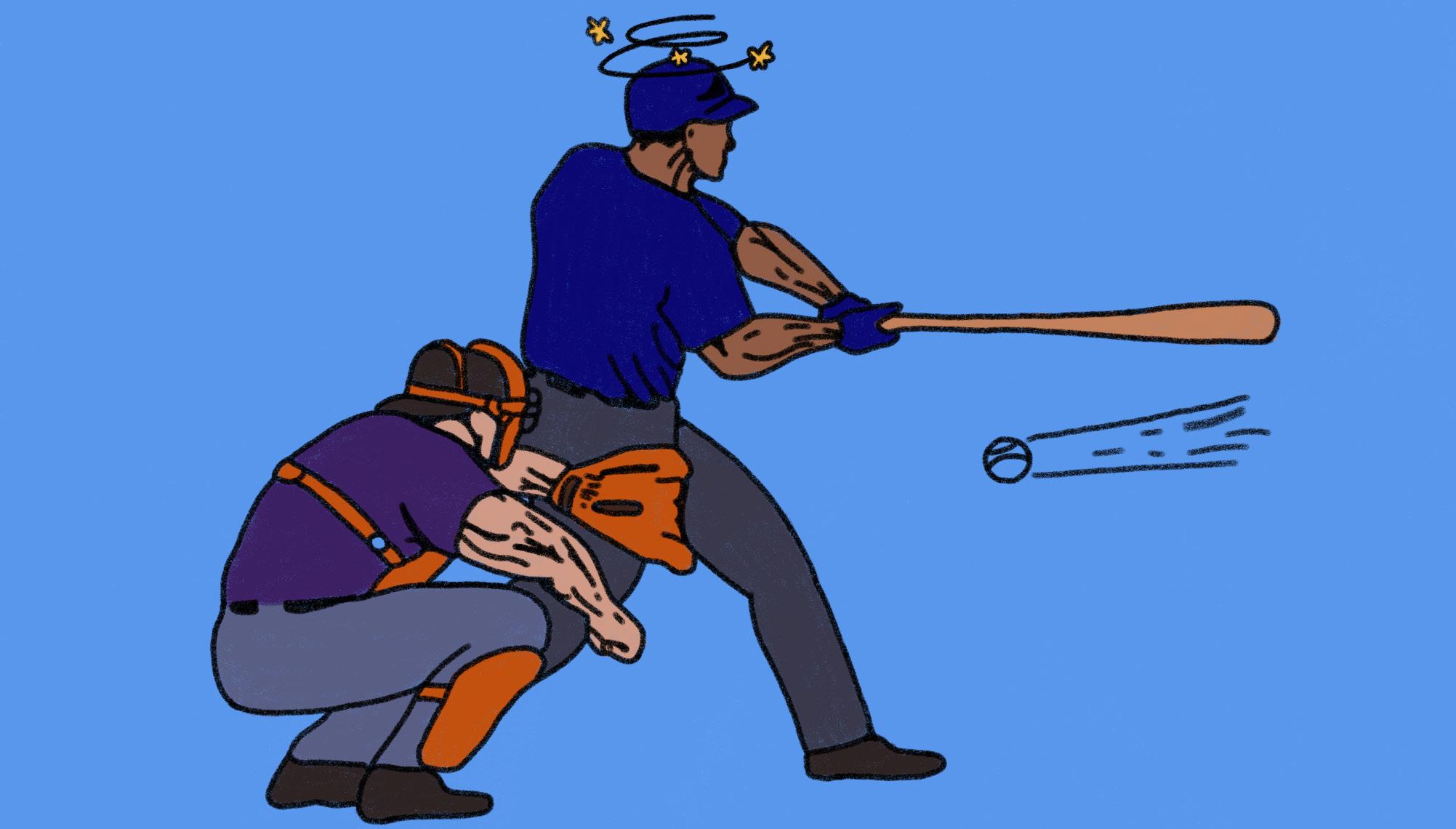
If you think it’s easy, take the example of Red Sox frst baseman Bill Buckner in the ‘86 World Series.
In the tenth inning of the sixth game of the series, Mets speedster Mookie Wilson hit an easy chopper to Buckner and, as he squatted down to feld the ball, it rolled right under his legs, allowing the Mets to score the winning run and eventually win the World Series.
“The dreams are that you’re gonna have a great series and win,” Buckner said in an interview after the error. “The nightmares are that you’re gonna let the winning run score on a ground ball through your legs. Those things happen, you know.”
All this goes to show that nearly every aspect of baseball contributes to a player’s mind being flled with overthinking, stress, doubt and a defated sense of ego. Baseball, at its lowest points, is a soul-sucking black hole that challenges every player to their core.
Ironically enough, though, those are the same reasons why it is also my favorite sport. The many obstacles make every hit, every win and every success, no matter how small, that much sweeter.
There may be lots of room for low points in baseball, but I know that the potential for highs in the game are much, much greater. The game may be a roller coaster of emotions, but it’s a roller coaster that drives me harder to continue my search for greatness.
pj’s predictions
You know what’s just as hard as hitting a baseball? Predicting baseball. Let’s see how these baseball predictions hold up at the end of the 2023 MLB season.
PROJECTED RECORD:
WORLD SERIES PICKS
PROJECTED RECORD:
92-70 85-77
AL Central champions, lose in ALCS
The White Sox’s blunder of a season from last year leaves room for a revenge season this year. While fans still have their doubts about the Sox, I expect the new coaching staff led by manager Pedro Grifol to add some newfound energy to the team. With the recent acquisition of former Royals’ All-Star left felder Andrew Benintendi, I can see the Sox putting up a solid season.

Third in NL Central, miss playoffs
After a series of big moves from the Cubs, my projections place them with a respectable record. The Cubs obtained designated hitter Trey Mancini, outfelder Cody Bellinger, shortstop Dansby Swanson and frst baseman Eric Hosmer. Considering the team’s new faces, my expectations for the Cubs are higher.

Although the Yankees have powerful pitching from Gerrit Cole and sluggers like Aaron Judge and Giancarlo Stanton, I believe Atlanta right felder Ronald Acuña Jr. will bring the Braves a World Series ring.

SWING AND A MISS: As Babe Ruth’s once said: “Never let the fear of striking out keep you from playing the game.” While it sounds inspirational, the reality of striking out is just one reason why baseball is an extremely challenging sport from a mental standpoint. (cartoon by Bella Brouilette)
BASEBALL, AT ITS LOWEST POINTS, IS A SOUL-SUCKING BLACK HOLE THAT CHALLENGES EVERY PLAYER TO THEIR CORE.”
Although hated on, baseball proves to be tough mentally
CURRENTLY ON PROSPECTORNOW.COM...

Check out what senior athletes from Prospect are committed to play their sport in college. The commitment page features all 22 of our athletes from every sport and division.
MARCH 13, 2023
Boys' basketball makes dramatic run
 PJ O'GRADY & ZACH MORETH Copy Editors vs
PJ O'GRADY & ZACH MORETH Copy Editors vs
The Knights eventually obtained a 31-26 lead with 4:45 left in the third quarter, due to an ofensive wave led by sophomore Ben Schneider. Unfortunately, they ran out of gas and lost the lead towards the end after a 10-0 run by the Mustangs.
After a rough 1-5 start to the season following a loss on Dec. 2, the boys basketball team had to go back to the drawing board. They knew that if they wanted to exceed dimming expectations, they would need to play as a cohesive unit rather than as a bunch of individuals.
“We have to have some other guys step up ofensively [and] score a little bit more to be able to win high level games,” head coach Brad Rathe said in an interview with KnightMedia on Dec. 5. “Whatever that might be — more assists, more scoring, more ofensive rebounds — it’s not necessarily more shooting.”
“We were really smart, deliberate and patient on ofense,” Rathe said after the game. “I think we just played with a little bit [of a] different attitude.”
1-5 knights' record at the start of the season versus the end
20-12
Whether it was pure luck, a series of lesser opponents, a result of their increased confdence or a mix of those factors, the Knights began a four-game winning streak. This would mark the start of the Knights drastic improvement for the rest of the season, according to sophomore point guard Drew Terpins.
Since their early-season schedule was flled with tough opponents, it made some sense that Prospect wasn’t getting the job done ofensively. The team was averaging 49.8 points per game (PPG), which was a small step above last year’s average of 48 PPG last January; their feld goal (FG) percentage was a dismal 41 percent and their free throw percentage was 66 percent.
Furthermore, the team’s lack of a proper mindset hindered their confdence and mentality. They fell short game after game: they lost 6857 to Libertyville, 48-41 to Saint Viator, 59-46 to Evanston, 50-45 to Lake Zurich and 52-41 to Rolling Meadows. There was only one win sprinkled in against Antioch (69-4), which meant the Knights were in a vulnerable position to start of the season.

Rathe and the team had to adjust if they wanted to have a season to remember. He started working on guided meditations with the team and visualization techniques so the team could feel more comfortable during game time.
Rathe constantly asked the team, “What do you want your legacy to be?”
At the time, however, that question was the least of their concerns.
According to senior guard Charlie Gilmer, Rathe also played motivational videos before every playof game relating to overcoming adversity and developing confdence.
“[Rathe] has always [been] big into mentality,” Gilmer said. “He just kind of kept us positive, kept us believing in ourselves and knowing that we were better than our record.”
Eventually, the Knights’ hard work started paying of. After their hard-fought 52-41 loss against Rolling Meadows on Dec. 2, Prospect showed everyone, including Rathe, their true potential. The game was tied at halftime, which was already impressive considering the Mustangs’ star player Cam Christie was playing.
“I think it was just starting to come together as a team more,” Terpins said after the Feb. 24 Regional Championship win against Palatine. “After those couple games, we kind of got a little anxious and realized it wasn’t going to be all smooth sailing, so we had to work together more and put more efort into what we were trying to do and accomplish.”
Gilmer thinks that the team was originally inexperienced due to the departure of nine class of 2022 seniors. This turned around, however, when the Knights fnally fgured out the talent they had in the program.
“It took us a while to fnd our footing,” Gilmer said. “Once we found that and kind of got into a rhythm and built some chemistry, that's when we really started to take of. Once we started playing well, confdence just kept building and building and we kept getting better and better.”
Gilmer also acknowledges that the team was less comfortable together at the beginning of the season. For example, at team pasta parties on the nights before games, guys often wouldn’t show up or would leave early. By the end of the year, players were showing up to the parties at 6 p.m. and would stay well into the night, sometimes leaving at 10:30 p.m.
“We just didn’t want to leave each other,” Gilmer said. “We all wanted to be around each other; we [are] all great friends.”
Luckily for the Knights, their adjustments were a success. Throughout January, the Knights went 9-1; their only loss was Jan. 19 against the eventual Mid-Suburban-League (MSL) East Champions, the Rolling Meadows Mustangs. The Knights, out of nowhere, had molded into a well-oiled machine.
Come the time for the IHSA playofs, which started on Feb. 22, the sixth-seeded Knights were set to play the 11-seeded Waukegan Bulldogs, who they handled with ease in a 62-35 win. Later, the Knights faced their biggest test yet: the Regional Championship on Feb. 24 against the MSL champion, Palatine Pirates.
REJECTED: Senior guard Alex Georgakas blocks a shot in the Sectional Semifnal game vs. Stevenson. The Knights went on to win, 45-44. “It took us a while to fnd our footing,” senior forward Charlie Gilmer said. “Once we got into a rhythm, that's when we really started to take off."
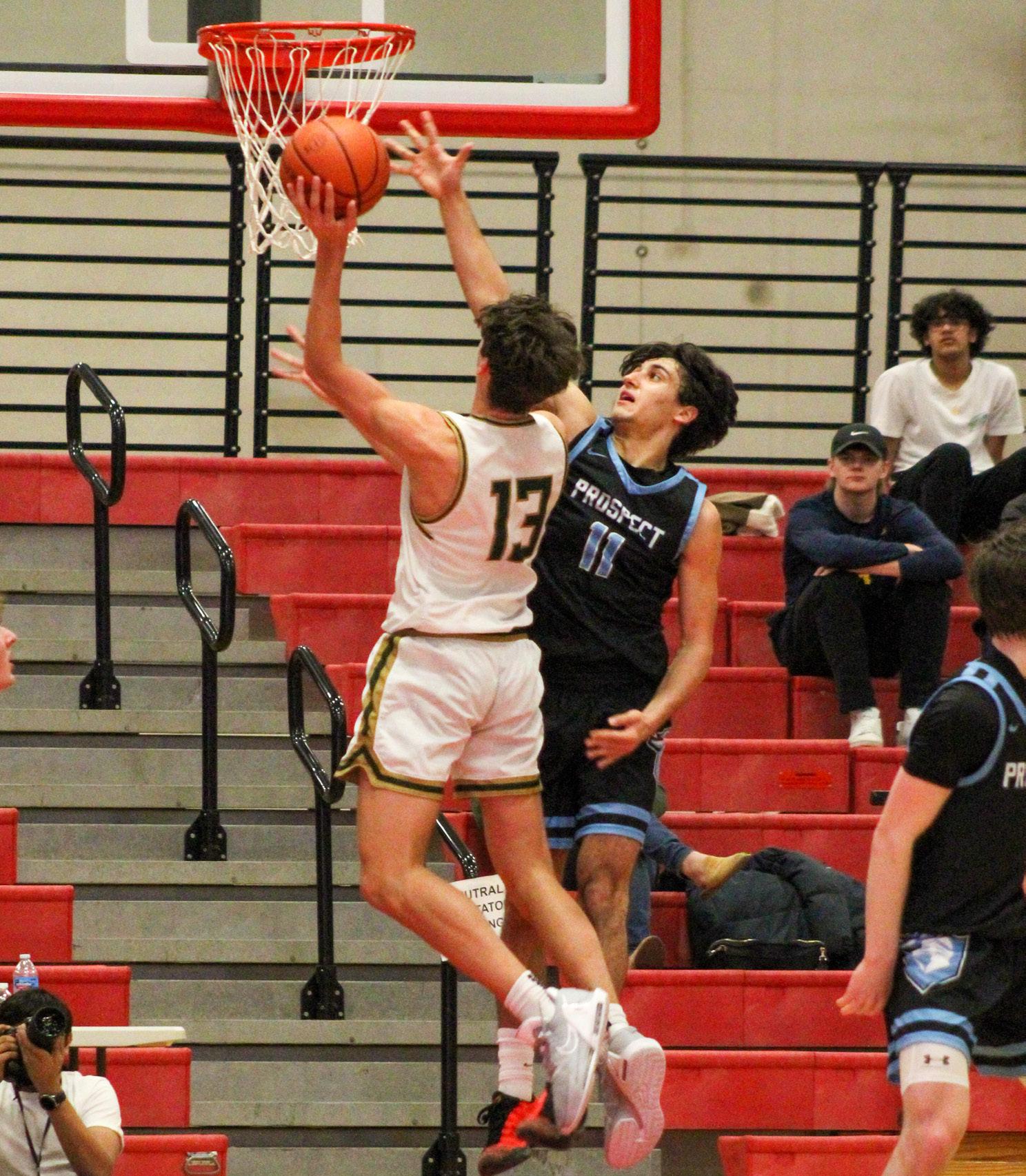
The Knights previously beat third-seeded Palatine on Dec. 6, 49-48. This time, the game was just as close, and yet another three-pointer pushed the Knights ahead. With 24 seconds remaining, Terpins hit the dagger, giving the Knights the lead and winning them the game 47-44.
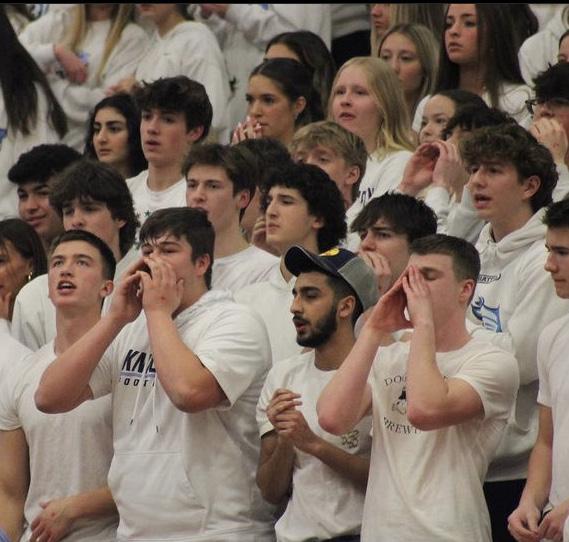
“I was a little beat up because I had two crucial turnovers, but after that timeout was called Alex [Georgakas], Ben [Schneider], Cole [Chapman] and Charlie [Gilmer] all talked to me,” Terpins said after the game. “They told me to have confdence in myself, so coming out [and] having the wide open shot I just felt it, and it went in.”
The result was the team’s frst Regional Championship since 2020, and the Knights would advance on to the Sectional Semifnal against the second-seeded Stevenson Patriots.
Similar to Palatine, the Knights had already taken care of Stevenson earlier in the season on Jan. 21 in a nail-biting 41-40 victory.
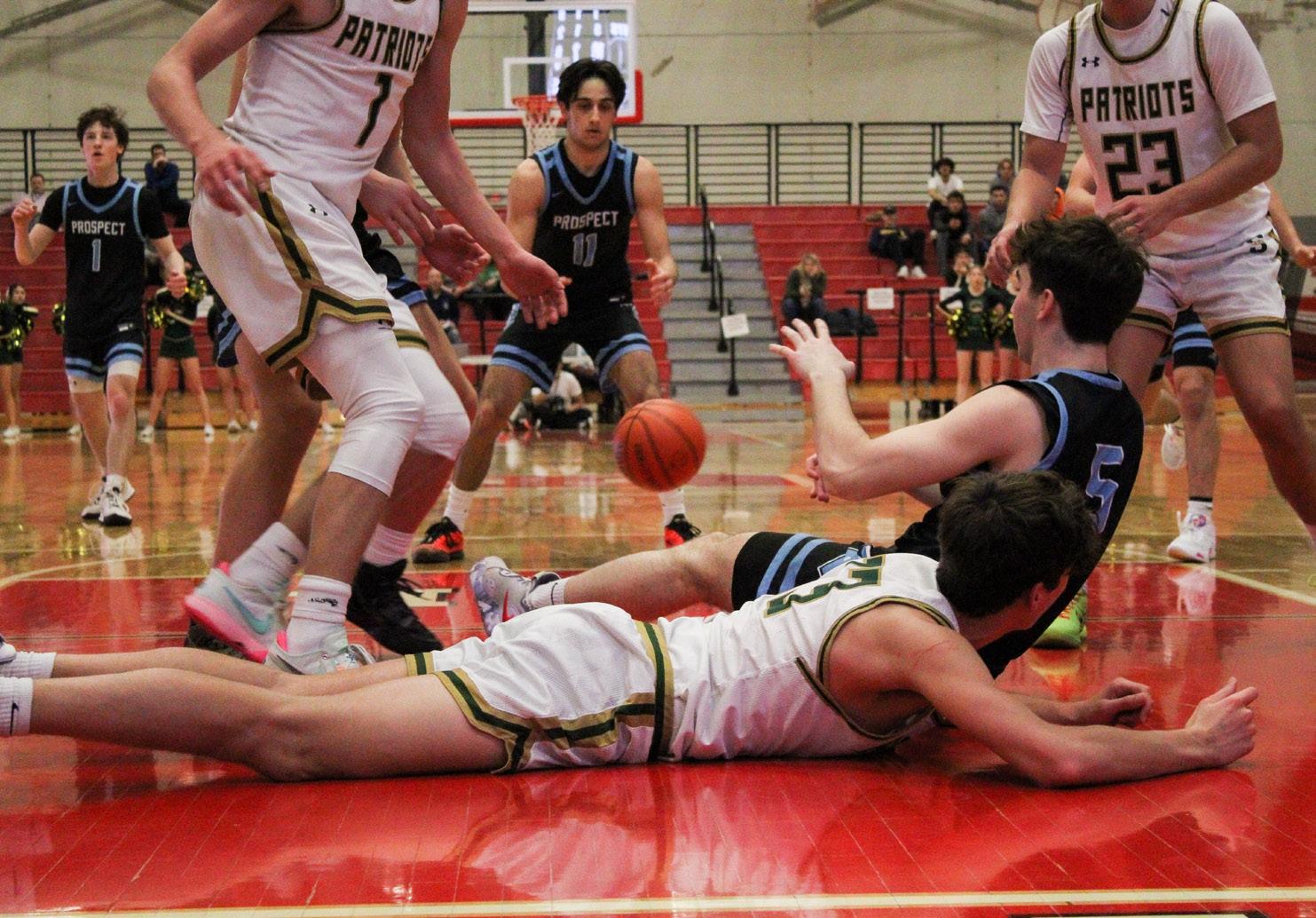
The most crucial point of the game was after
an and-one by Stevenson senior David Sulnius, which gave the Patriots a 44-43 lead with 6.4 seconds remaining. Unfortunately for Stevenson, the Knights’ season was not going to end without a fght.
With the season on the line, Schneider hit undoubtedly the biggest shot of the year and maybe one of the biggest in the history of the program. Down one, the sophomore took the ball down the court, pulled up for a three pointer and nailed it. Schneider’s unbelievable shot sent the Knights to their frst Sectional Championship game appearance since 1991.
“I was relieved to say the least,” Gilmer said. “Schneider hit that shot and had my back … It was just relief, joy [and] excitement for the next game. It was just awesome.”
Moving on to the Sectional Final, the Knights were slated up against the number-one seed: the Libertyville Wildcats. After a hard-fought game, the Wildcats reigned victorious in a 60-42 win, putting an end to the Knights’ underdog season.
While their season ended a couple games shy of a trip to state, the Knights gave Prospect a team to rally around. The amount of fans that showed up to support the Knights was a truly special experience to the players.
“It was unlike anything I've ever played in before,” Gilmer said. “Throughout the season, the Viator game, the two games we played against Meadows and the Hersey games were big, fun atmospheres. But they were nothing compared to the Regional Final; hearing the crowd when Terp hit the shot and when everyone rushed to the foor at the end. That was just surreal.”
The Knights’ three-month season could be considered something of a miracle: their PPG increased to 53.4; their FG percentage increased to 47 percent; and their free throw percentage rose to 75 percent.
Not many people thought that they could generate a winning record — especially after the team’s 1-5 start — much less win a regional title and play in the sectional fnals. It’s safe to say that the Knights did, in fact, “leave a legacy.”
“It was a whole lot of fun,” Gilmer said. “It wasn’t always perfect, and it got frustrating at times, like every sports season does, [but] … we really accomplished a lot. We were proud of ourselves at the end, so it was all worth it.”
